Lori and I managed to get through China without any major health issues. We could have been a lot more careful with food and even ate street food and brushed with tap on occasion, which only emboldened us to test our limits. We had minor issues here and there with irregularity, grumpy stomachs and such, but never anything to write home about.
Until we got to India…
Now, I’ve traveled in some pretty unsanitary places, to say the least — downright appalling wouldn’t begin to describe some of them. But India has proven another beast entirely. Oh the humanity, oh the filth. In fact, after a couple of hours of merely existing in some places we’ve visited, it seems utterly laughable to bother squeezing out a pea-sized dot of hand sanitizer — but I suppose it’s for Lori’s mental health more than anything…
I do want to insert here that I don’t want to give the impression that the whole of India is a wasteland of deplorable conditions, that the god of all things healthy and sanitary abandoned long ago never to return — but there are certainly [CERTAINLY] pockets, large pockets of unimaginable filth. One such pocket is Old Town Varanasi.
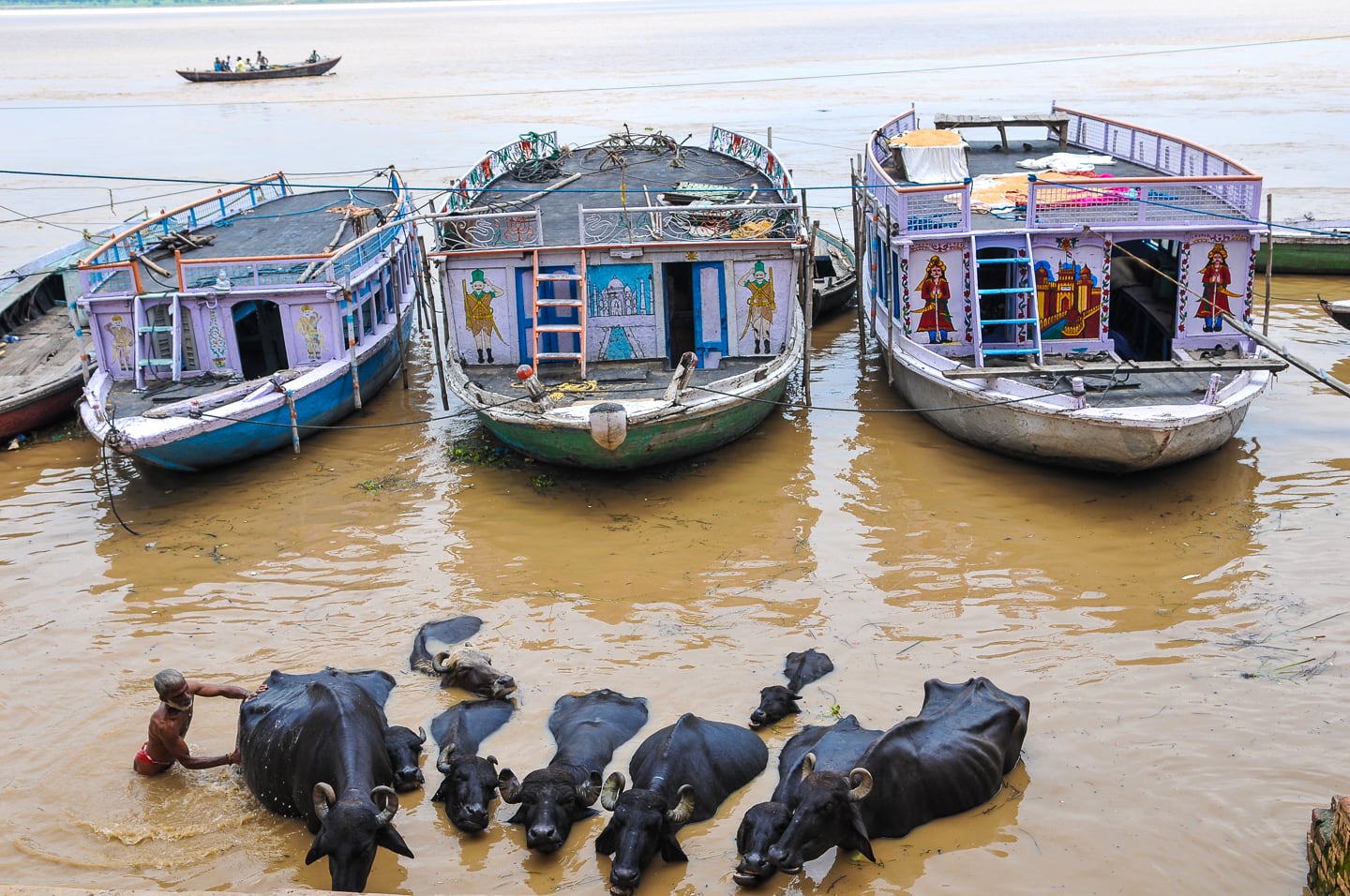
Let’s talk “Varanasi soup”
Now, before you start sending me hate mail, hippy-Henna-India-traveler-sister (y’all know who you are), I do quite like India, it has certainly grown on me — and for reasons that I didn’t anticipate. And, yes, I get the Varanasi thang (actually, I’m not sure I “get it” to the extent that smiling and dazed dreadlocked foreigners walking barefoot over and all up in fresh cow diarrhea do — try as I might), but I get that it is a fantastically spiritual and utterly holy place, where pilgrims of all walks of life come to have their earthly remains committed to the Holy Ganges. It is an old place, where ancient-looking gurus and holy men appear to have stepped right out of a B-movie set and into the narrow alleyways of the Old City.
There are more Hindu temples here than any place we’ve been, and many more dead bodies constantly being carried through alleyways to be burned or set afloat by friends and family members. It is, in short, like no where I’ve ever been. But oh, the humanity, and the lingering odor of dog/cow/people sh*t, food scraps and other skankiness rotting under hot and humid skies, wads of bright red tobacco spittle mixed with urine, puke and any other bodily fluid you can think of.
And since we’re in the rainy season, it rains — tremendously powerful storms that in the course of one evening rose the mighty Ganges a staggering five feet (not to mention the water level of our room)!!! In the dark and dank alleyways, the heavy rainfall serves to mix all of the disgusting detritus and filth into a lovely soup for the senses (and for your sandals). Up until yesterday, in fact, my Tevas had been relegated to a sealed garbage bag in the bottom of my pack — I dreaded the day I would eventually be forced to clean the caked on unholiness from them — that day arrived yesterday, but that’s a different story.
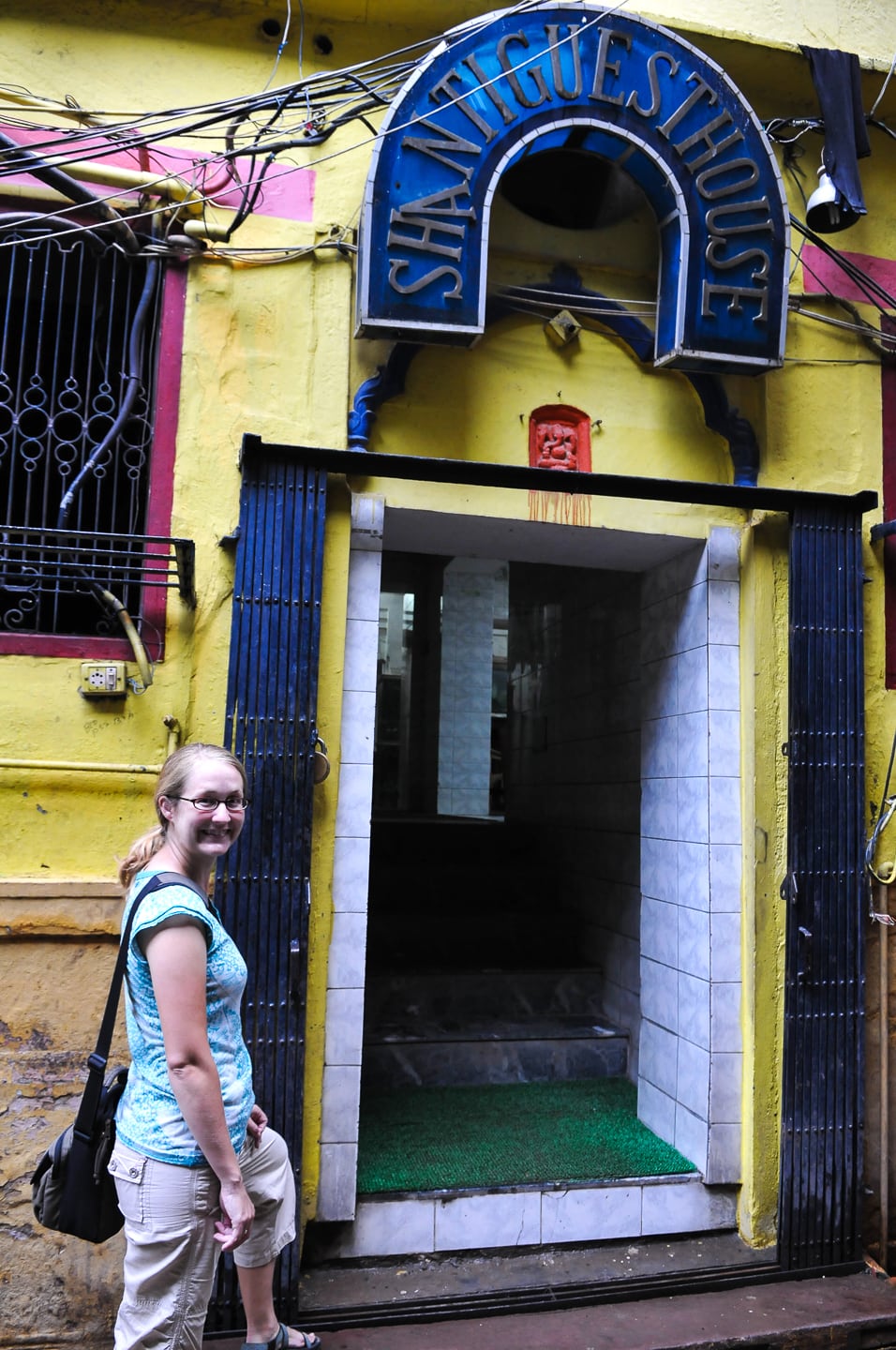
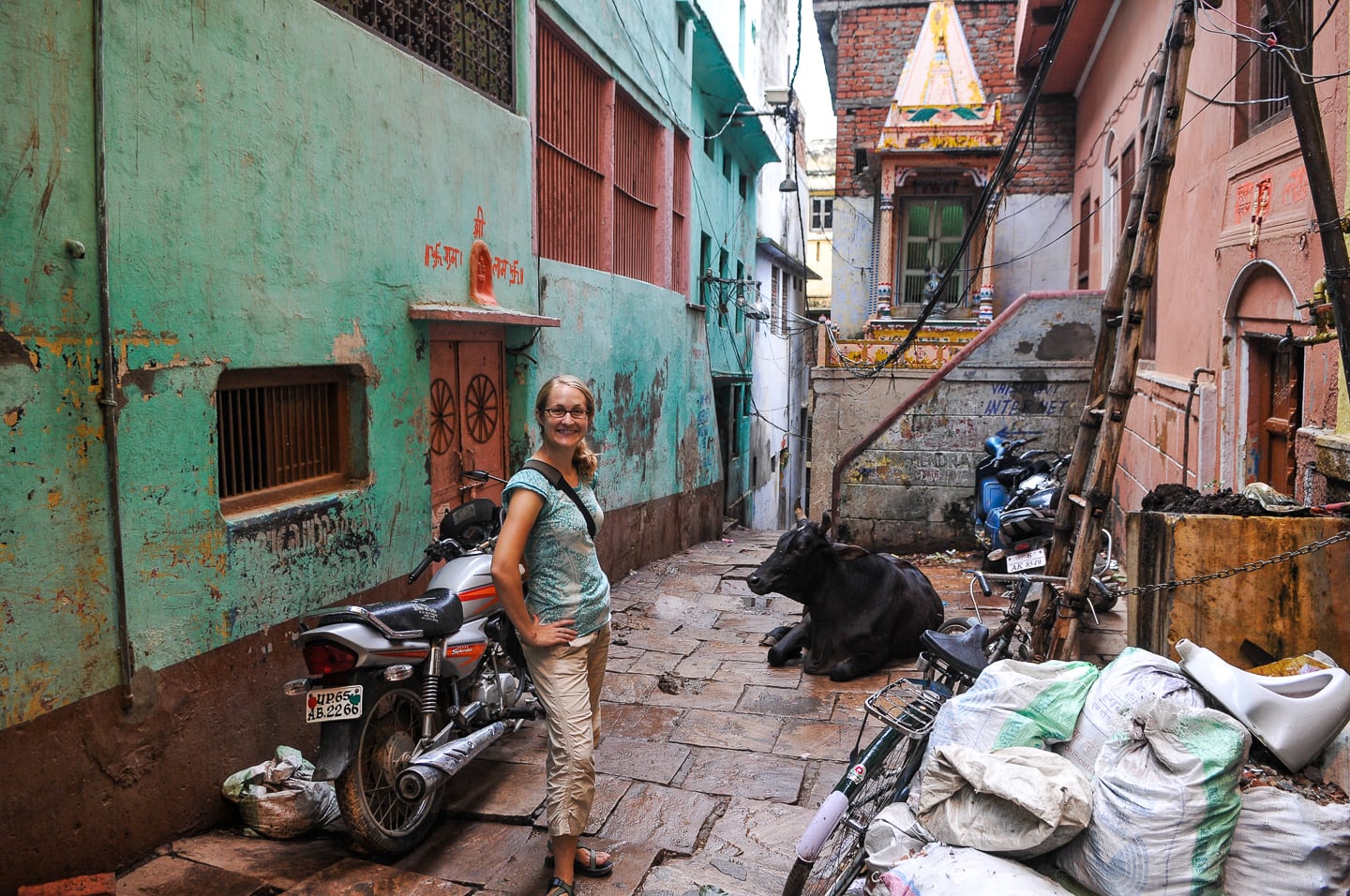
The view down our alleyway outside of Shanti Guest House — a lot going on, we’ve got after-monsoon soup-filth, a tiny Hindu temple, some sacks of God-knows what topped with the obligatory old urinal, and of course, a big, filthy bull chillin in the middle of it all. MOOOOVE ASIDE!
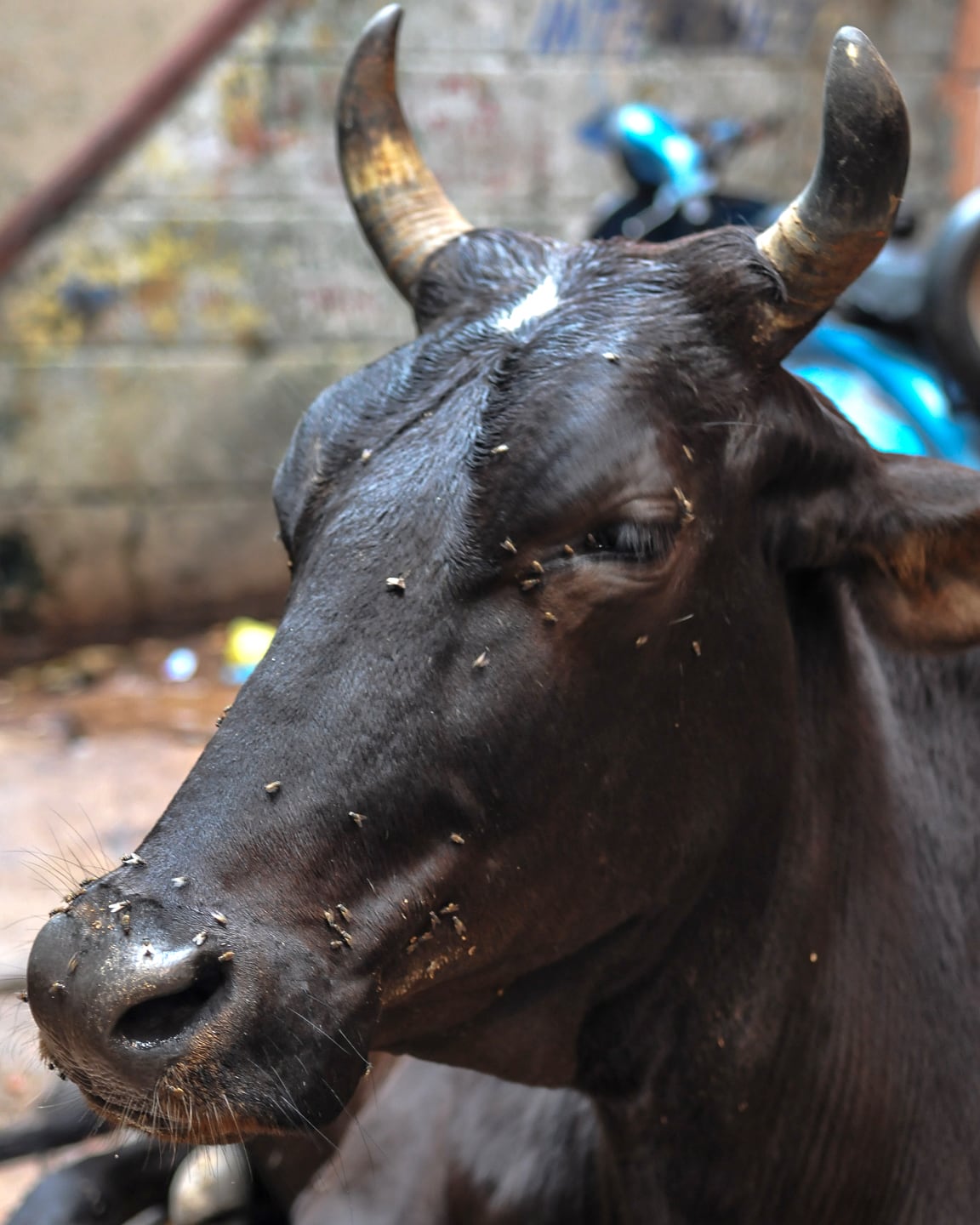
Let’s talk spirituality and suffering
I must admit that my time in Varanasi is tinged somewhat by the fact that, for the second time in India (mind you we had been in the country by this point for about a week) I was laid up in bed sick as all-get-out. In Kolkata, Lori and I had some pretty rancid food illness, exhibiting a level of violence and unrelentlessness neither of us had previously known. In Varanasi, I was lucky enough to contract some sort of vicious and unrelenting fever that came on with a vengeance and would not let go. It compromised my immune system even to the point that I was so very fortunate to contract a second round of food poisoning, and also a pretty bad cold (that still lingers). But we did manage to get in a day and a half of sightseeing before I would spend the next 4 days in bed in Varanasi, Delhi and on the overnight train in between.
While convalescing in my non-AC room on the fifth floor of a very basic guest house (a whopping $5.45 a night), I whiled away the hours staring at the ceiling fan whirring around and trying to catch a hint of a fresh breeze from our windows in between gasps of burning flesh from the rudimentary human cremation structure below our window. Now, if you really want to talk about true spiritual experiences — three days of that and I promise you, you’ll find religion.

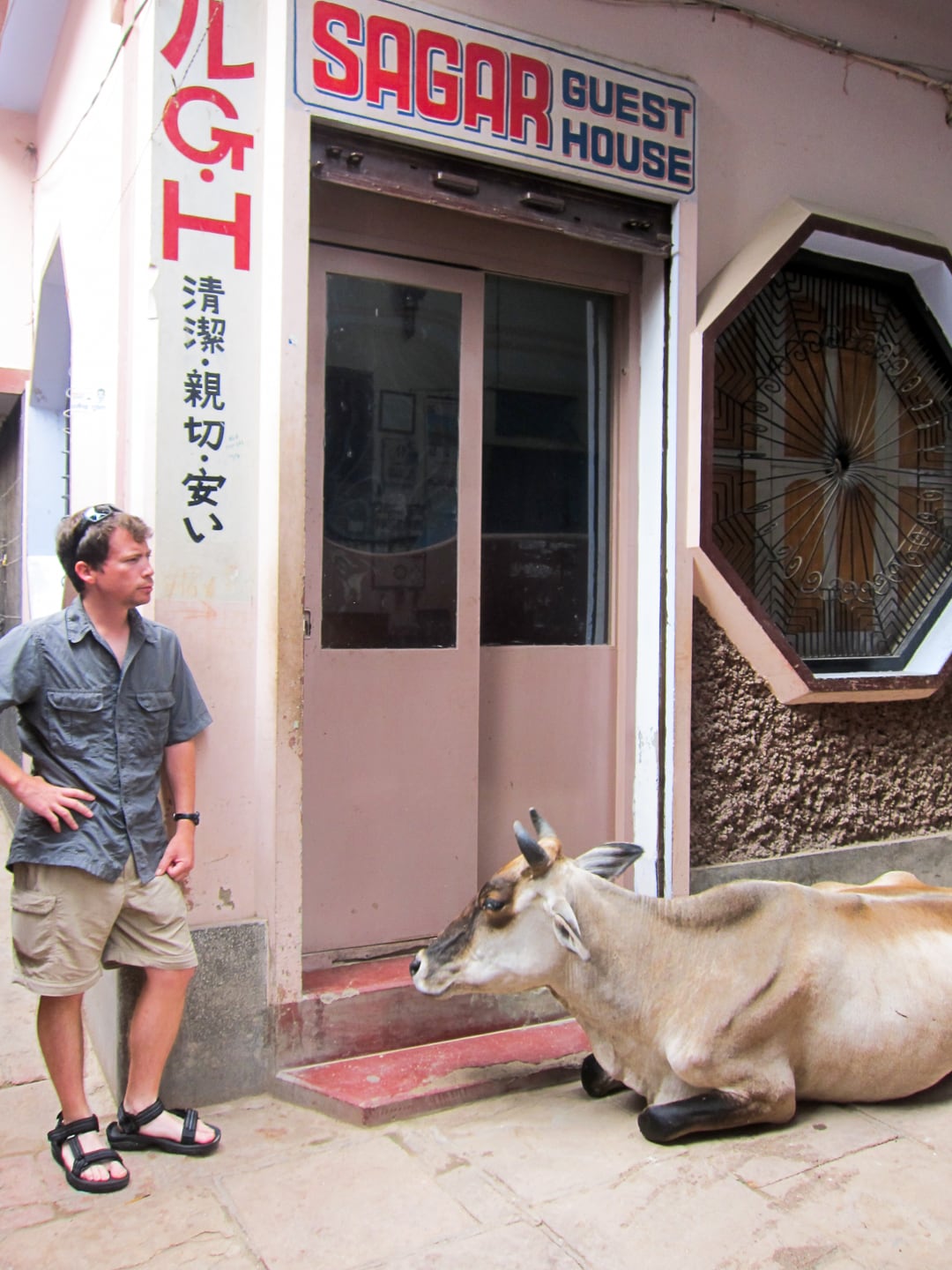
A rare photo of me standing upright in Varanasi — in front of our first night’s accommodations, Sagar Guest House. Holy cow included in the price of the room.
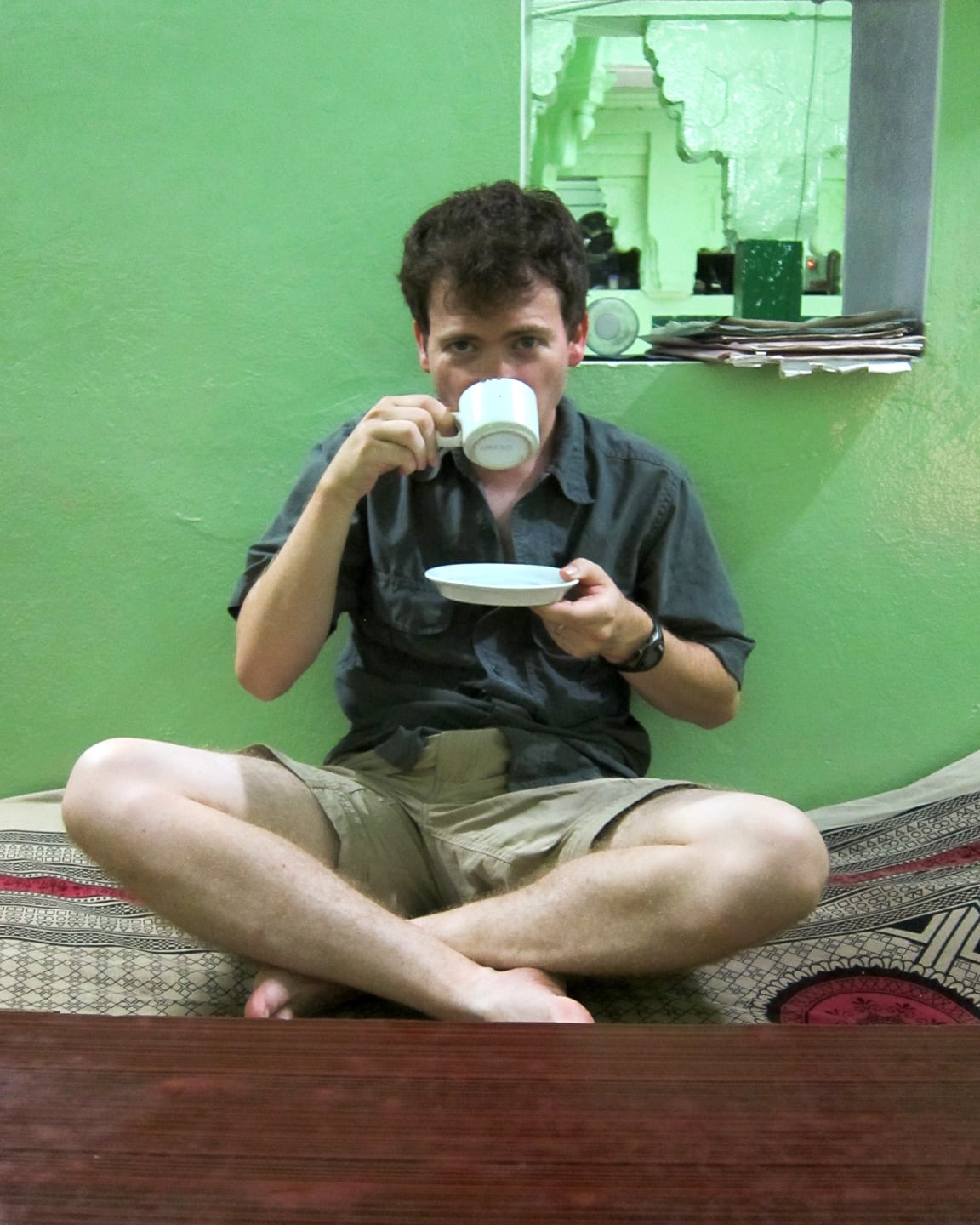
Let’s talk about monsoon rains and other things
Despite all of this, if you’ve got more than a couple of weeks in northern India, Varanasi is worth a stop. It’s like no other place you’ll ever see in your life time, promise. But promise me, you won’t go in the middle of monsoon season. There are lots of reasons not to.
For one, as the name might imply, it rains an awful lot during the monsoons in Varanasi, which affects all sorts of things. For one, one of the great pleasures of a trip to Varanasi (so we hear) is a sunrise/sunset walk along the riverside, exploring the holy ghats (areas where stone steps lead down to the water, often adorned by some sort of temple or holy place). Lori and I did not get to partake in this because the river was high, very high, and rising the whole time we were there. When we arrived, there was a sizable island in the middle of the river. It disappeared by the time we left. If you want to see the ghats (arguably the reason most foreigners come to Varanasi) in the monsoon season, you can either hire a boat (but mind you, the water is extremely fast and unruly this time of year) or try and access each of the dozens of ghats from a twisted, tangled network of alleyways.
Sounds like fun? Try adding the ever-present, most annoying tout in the world, of all ages. If you pause for a moment to get your bearings, he will insist that you are lost and can only survive with his help. If you fall for it, even for a second, if you ask for directions, or send a passing glance his way, he will demand an ungodly sum of money. All the while, there are three other men who also want your attention (and money). They are yelling all sorts of things at you from nearby shops. But they aren’t simply asking you to come look at their shop. OH NO! They want to know which country you are from, where you are going, where you are staying, and if you show frustration, they will demand of you “WHY ARE YOU ANGRY!???” Then there are the guys who managed to catch a whiff of the pair of whiteys who have stopped momentarily to get there bearings in a dark, dank twist of alleyways and they are demanding that you get on a boat with them — NOW — for some hilarious some of money, which they promptly lower by some measly figure. They always have a brother or cousin or nephew who will give the best deal in town. All the while, there are motorcycles speeding down the alleyway at breakneck speed, trying to pass each other — oh wait, here comes a heard of sullen-looking bovine, and apparently their lunch of trash and feces didn’t agree with them so much, so they are eagerly adding to the Varanasi soup below your feet, in a desperate attempt to keep it hot and fresh. Now, the military men who guard the temple are yelling at you and waving their assault rifles around with reckless abandon. The mosquitos are out in full force, there’s a large rat who has become intrigued with whatever you just stepped it — and now it’s raining — pouring actually.
Another reason not to go in monsoon season is the famous Varanasi sunrise over the Ganges, because there likely won’t be any. At least the four mornings we stayed in Varanasi, the only thing that greeted us at 5am was a dull and hazy sky that cast about as romantic and magical of light onto everything as a dreary Seattle afternoon in March. In September (like in Seattle), we hear it is indeed magical. In August, not so much.
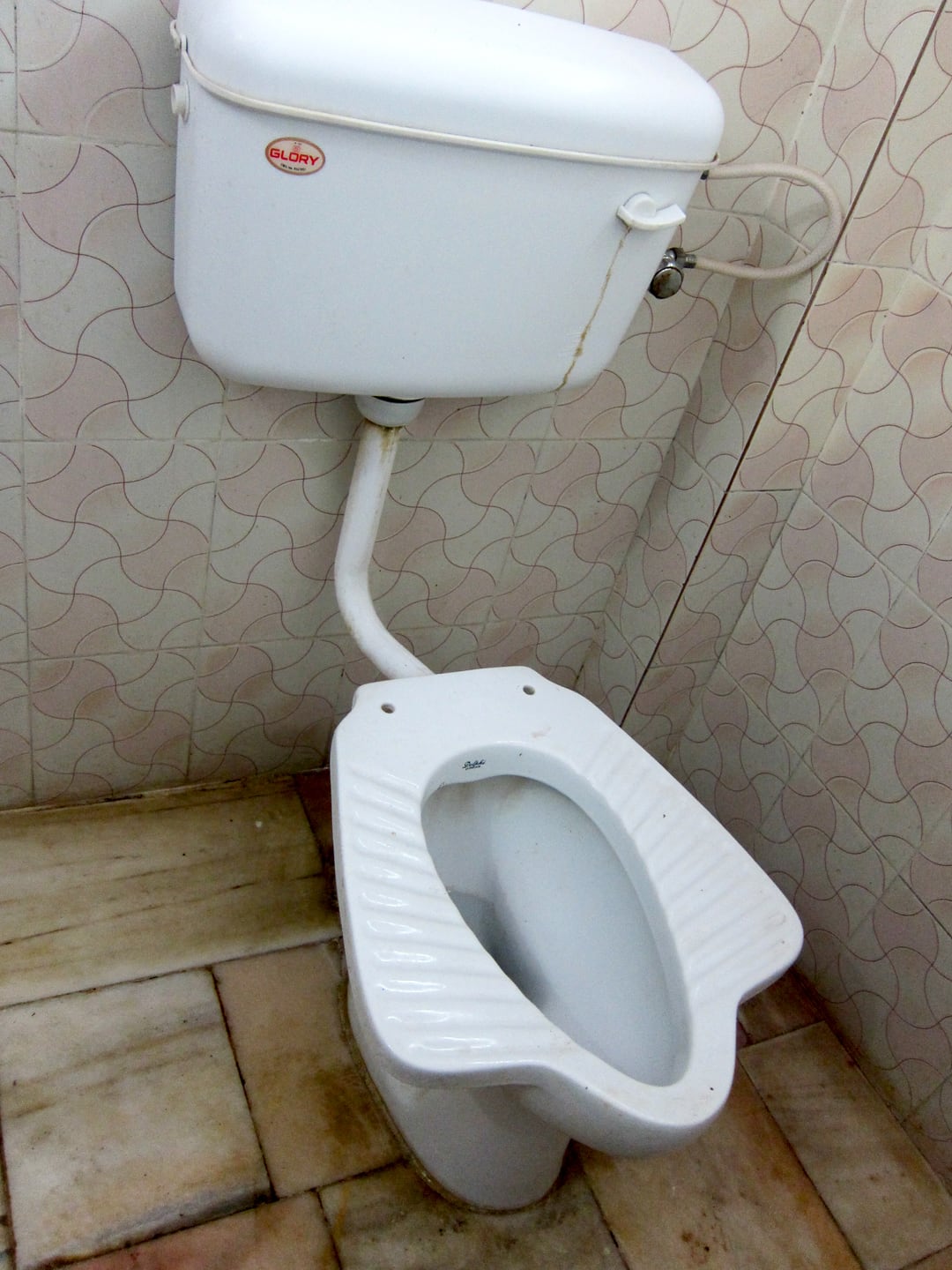
Let’s talk heart-breakingly useless inventions
If there ever was something even more pointless than the “hybrid” commode, I’d like to see it (actually, I could pass on that). I mean, seriously, what is the point? You can’t very well stand on it because it’s slick tapered porcelain and you’re likely to end up taking a bath along with whatever you’ve since deposited. And you can’t very well sit on the thing because, well that’s just disgusting if you really think about it. India, stick with the Asian squat or Western sit-down (preferably the latter). Don’t try and get creative.
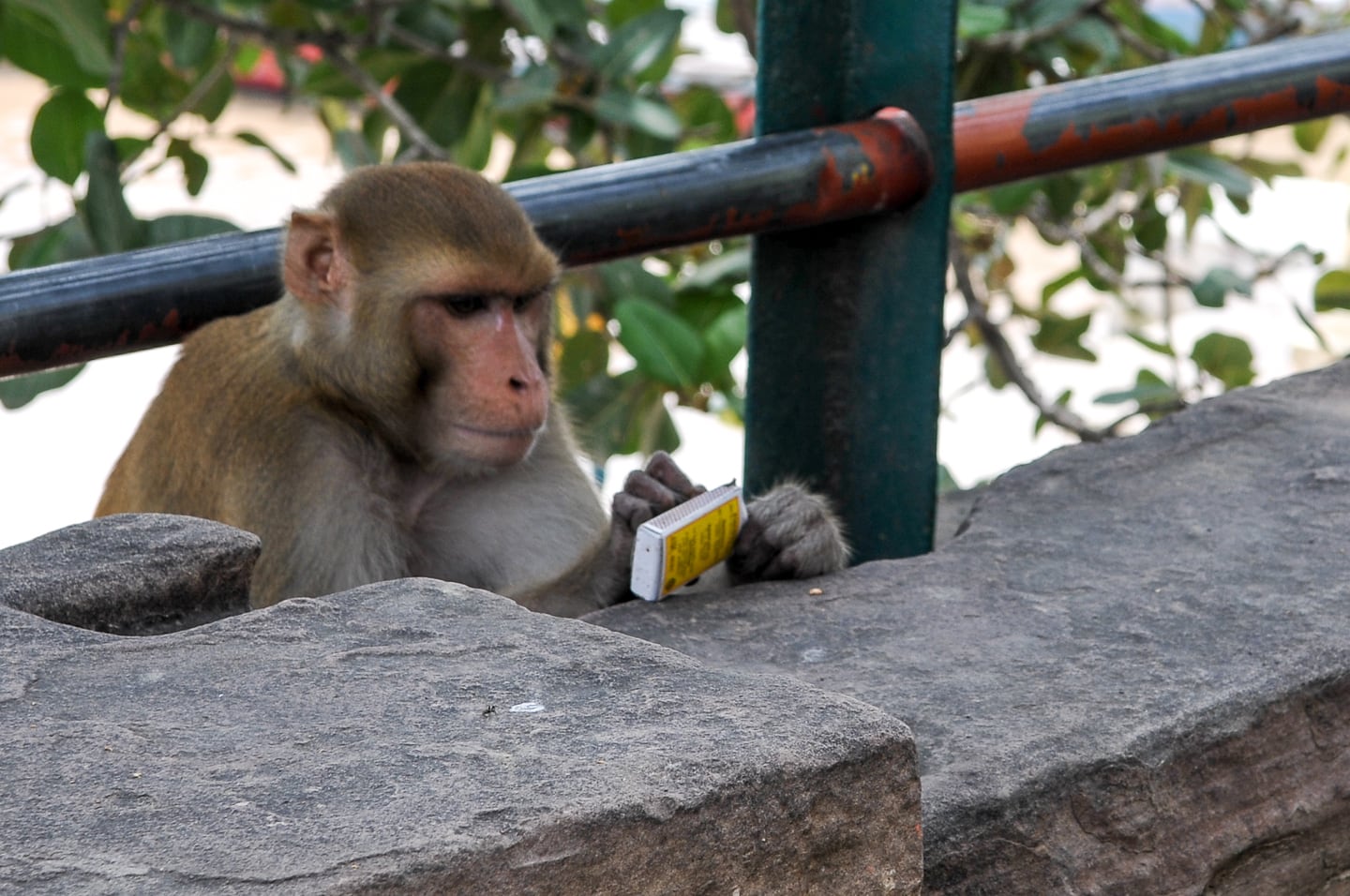
Now let’s talk about some happy things
Alright, so Varanasi isn’t all bad. It’s got a lot of monkeys, like this monkey playing with matches above. That’s pretty cool, right? I mean, where can you see a monkey playing with matches? This monkey was pretty vicious too. He growled and hissed at me for taking his picture, and then asked for money in broken English before proceeding to light matches one by one and flick them at me when I refused to give him anything but a disdainful look.
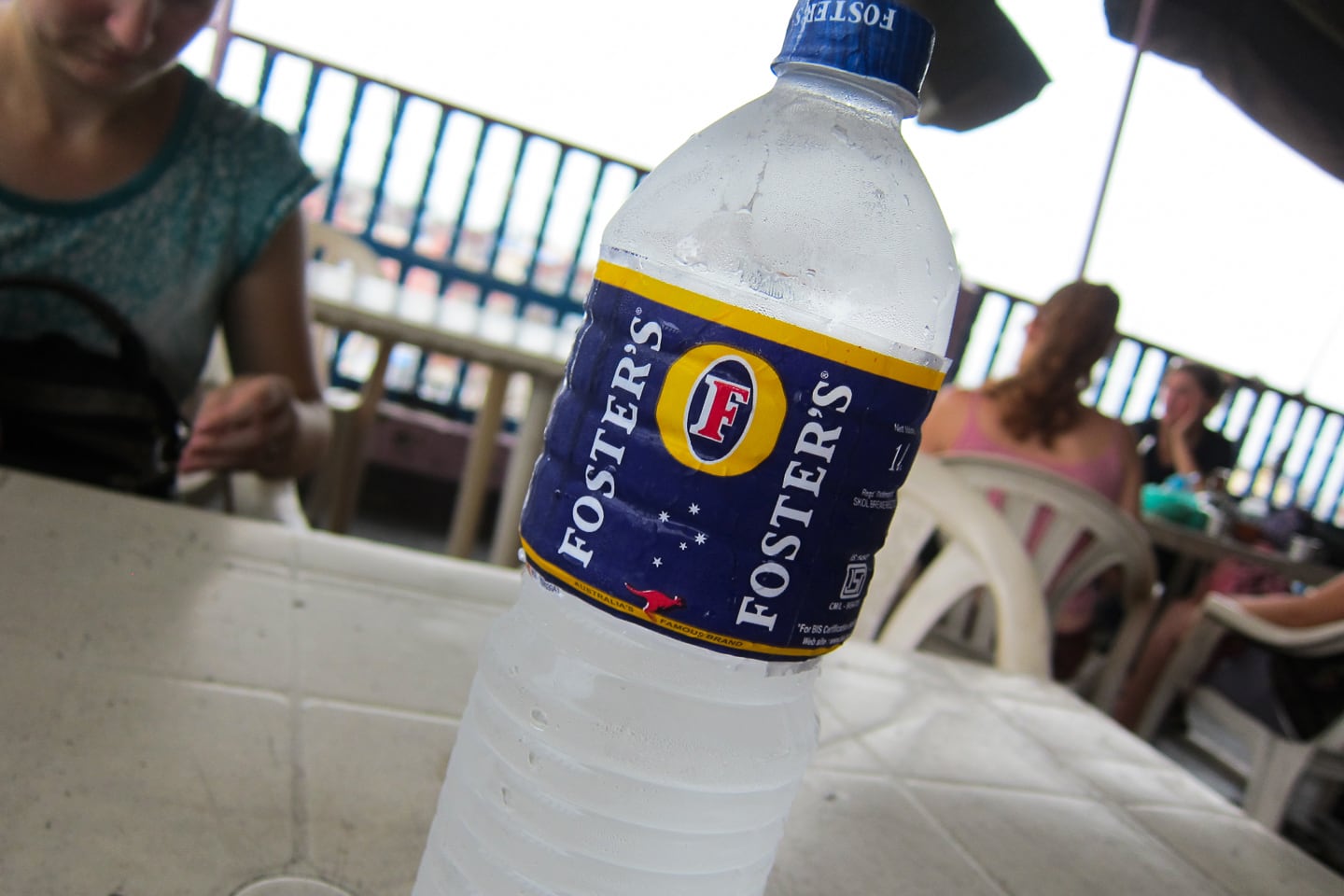
And they had Foster’s (Australian for beer???) WATER, which was water dressed cleverly to look like beer in a town where it is virtually impossible to find beer (and absolutely impossible to buy within throwing distance of the Ganges). I really wonder how something like this comes about. Does Foster’s REALLY want to get a share of the Varanasi market THAT BAD? Or is it the work of some local counterfeiting operation, and if so, what makes one decide, “hey, let’s produce water bottle labels that advertises a beer nobody’s heard of around here.”
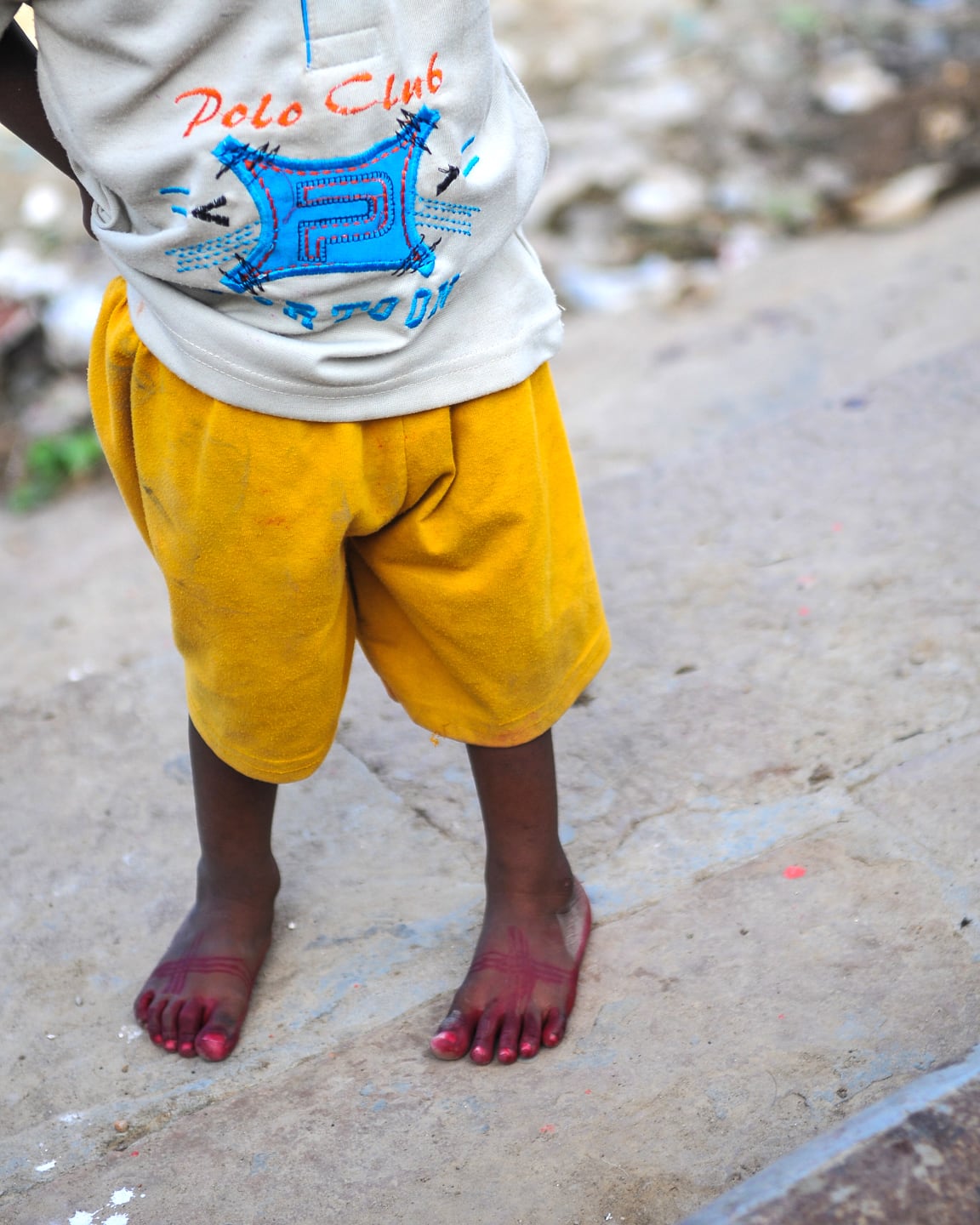
And here’s something else that’s pretty cool too — how many places have you been where kids stomp around in animal blood? That’s pretty cool, right? But seriously, this kid’s sporting what’s called “alta,” a red dye that’s usually applied to women’s feet during ceremonies and holy seasons. Not sure why this kid has it though, maybe they had some left over and thought it would be fun to make the kid wear it too. I dunno.
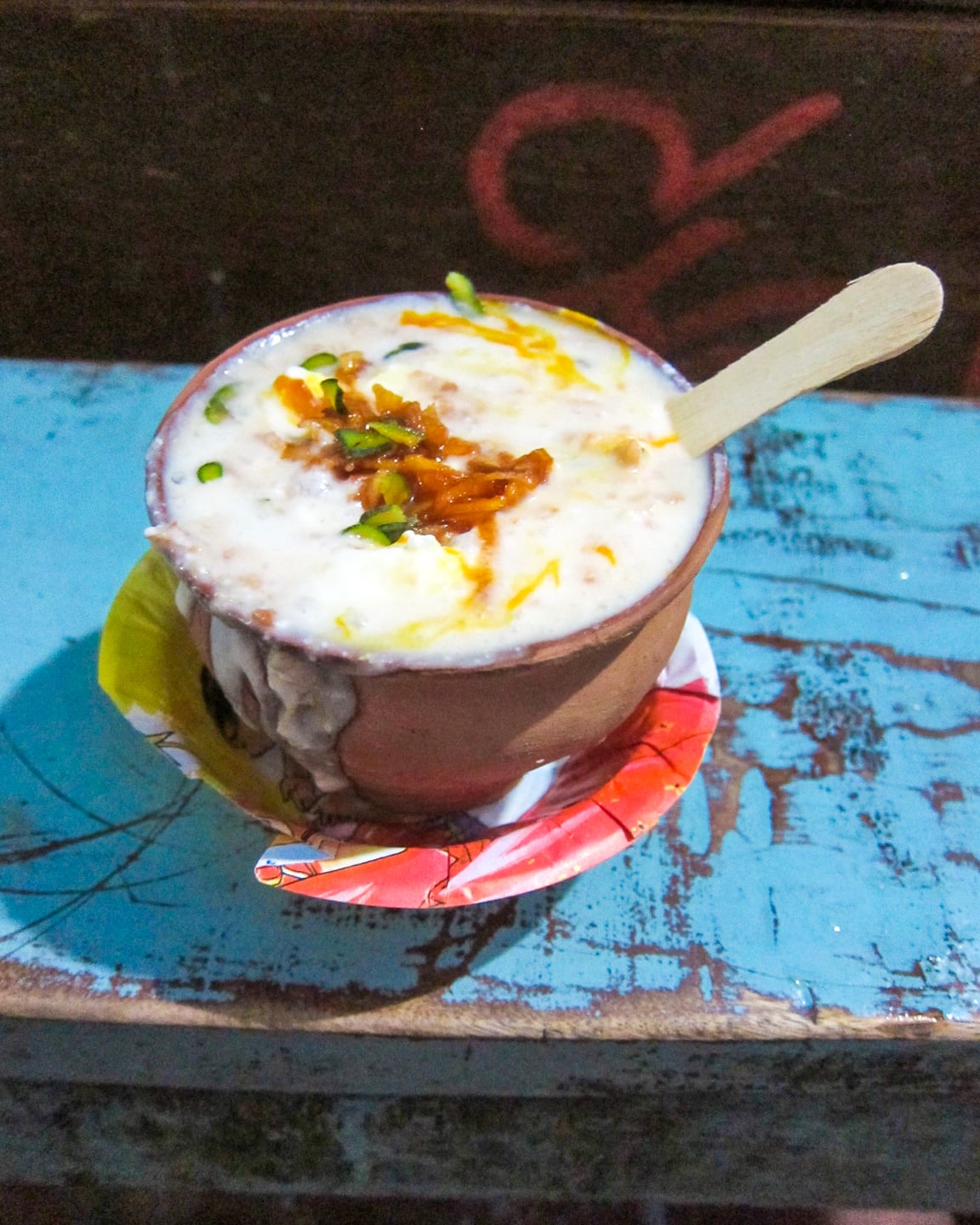
This is called a Lassi. It’s a yogurt drink mixed with fruit or chocolate or whathaveyou. This one is from the famous Blue Lassi shop in Varanasi. I was told [by Lori] that this one was very good. I was back at the guest house moaning and groaning from a 104 degree temp and sucking corpse ash and Lori was out having Lassis. To be fair, she did bring me back a bottle of cold water, which sounded far more delicious at the time than a yogurt and fruit drink. But seriously, Lori was a fabulous caretaker and ran several errands (especially in New Delhi) while I was out of commission including buying train tickets and stocking up at the pharmacy with all kinds of goodies. But the lassi does sure look good, doesn’t it? I imagine her there devouring it with the new friends from Europe she met, having a lovely ol’ time. I’m not bitter, really.
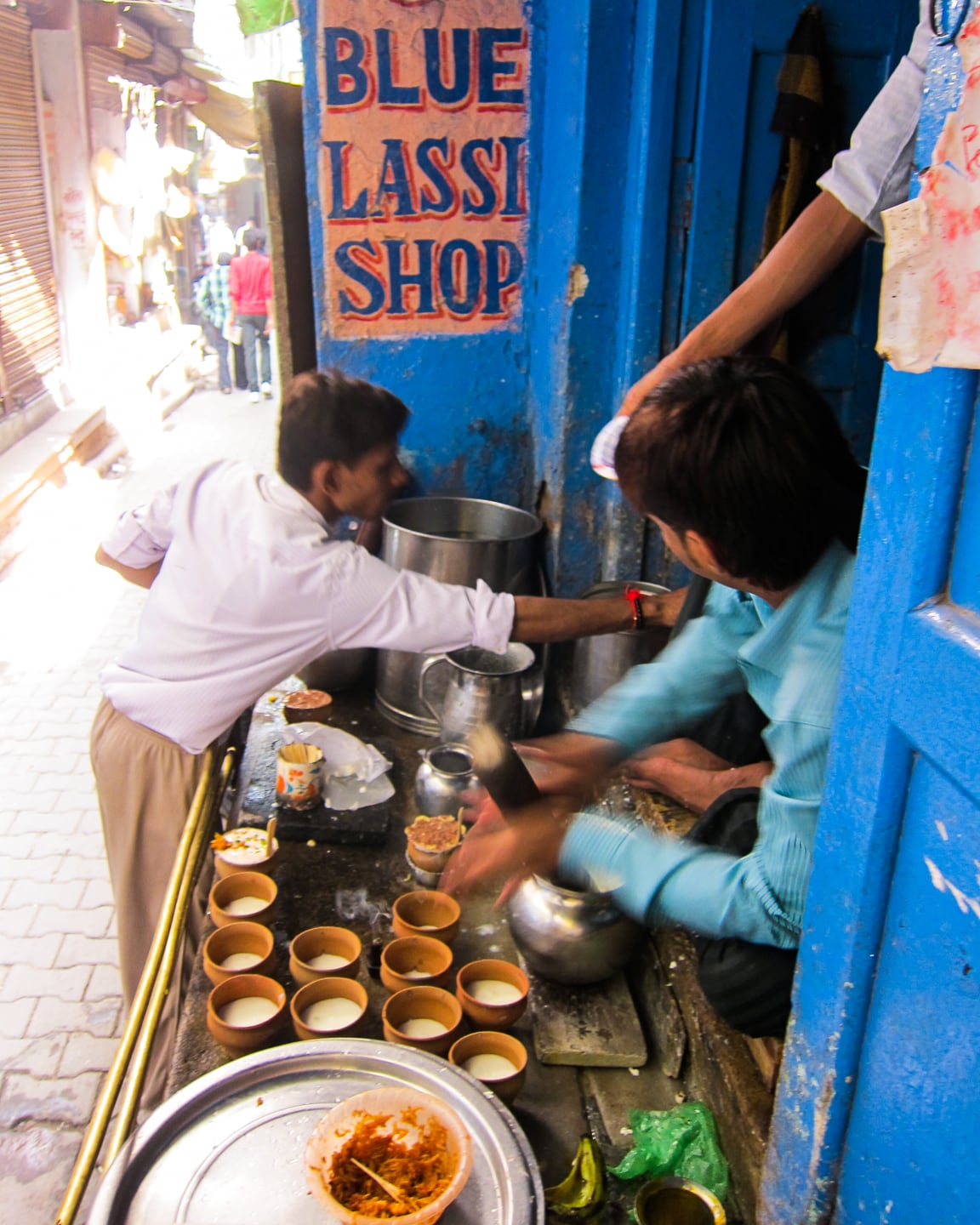
Let’s talk about a [mostly healthy] stroll through Varanasi
We had one really fabulous day in Varanasi before I fell ill with who knows what. We seemed to possess some magical power that day that kept the touts and annoying people at bay for most of the day (it’s likely it could have been the oppressive heat). We started our day at our favorite eating establishment, Lotus Lounge on Mansarowar Ghat, and headed south to Assi Ghat.
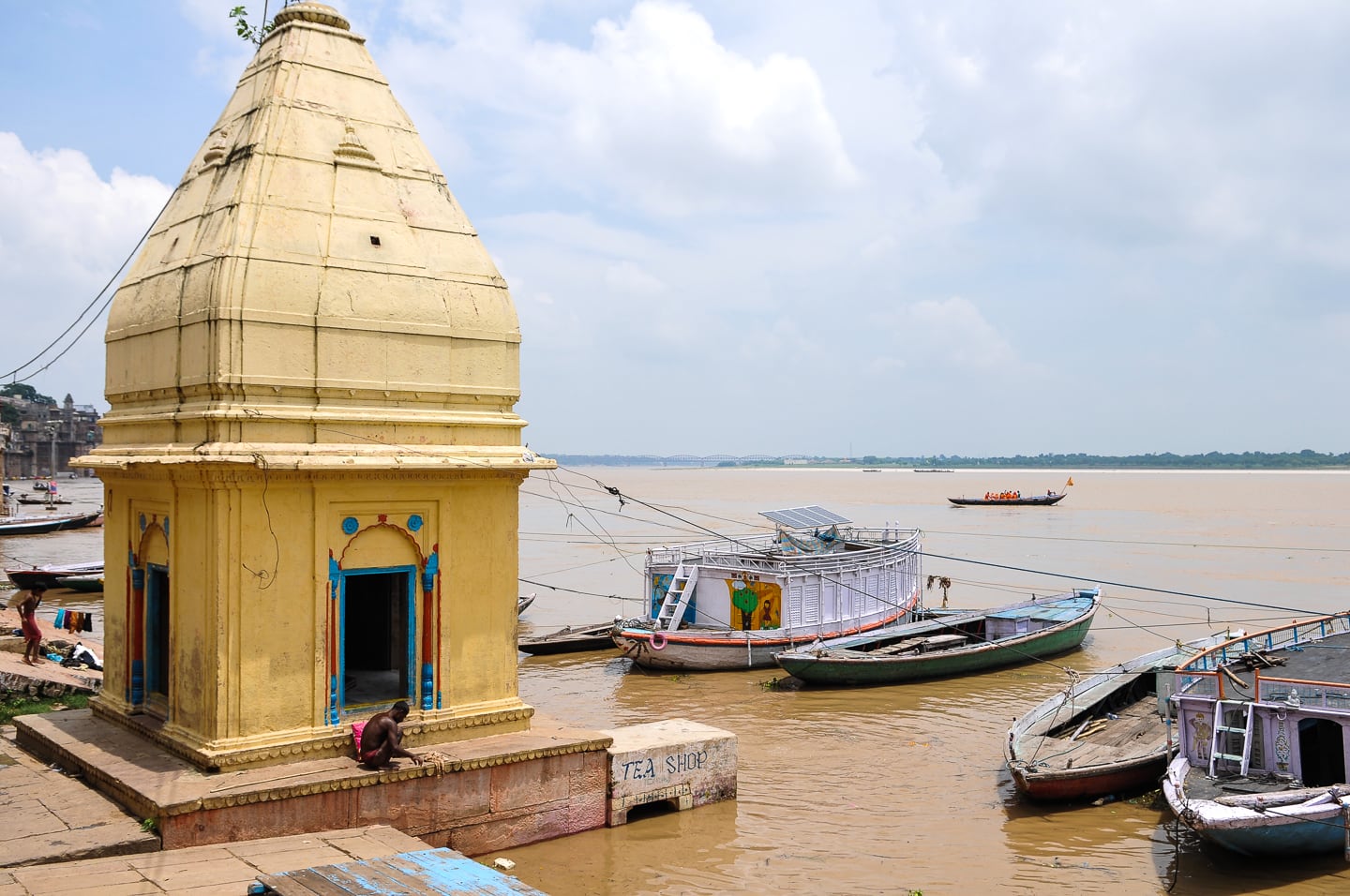
Mansarowar Ghat is a bathing ghat, which means that people — you guessed it — use the steps here primarily for bathing.
I think this is a fun and totally appropriate time to mention that earlier that morning after having a lovely breakfast of brown toast, porridge and fried eggs at Lotus Lounge, I spied a dead person, fully splayed (and mostly dressed) floating by on the Ganges just as I was heading to the toilet. In addition to being, yes, a sober reminder of one’s own mortality and the short time we have in this world, yaddy, yaddy, I couldn’t help but think, well, yet another reason why I think I’ll skip bathing in this particular river this time around — nevermind the fact that they pump the raw sewage of the city directly into the river and that people and animals deposit their own constantly on the banks. Oh, and did I mention that people use it as the main repository for their garbage (when they actually take the time to move it from the alleyway next to their abode)? Yes, I know, many of these people have no other choice but to bathe in the filthy, putrid waters of the Ganges and that it is a testament to the profound state of poverty too many of India’s people find themselves grappling with on a daily basis — but SURELY there must be some alternative to bathing and collecting drinking water next to dead bodies. For all of India’s wealth and technology, certainly they can figure out a better way.
But let’s not forget, many hold this river holy and sacred and nothing, not even rotting corpses floating by can persuade these people to look elsewhere.
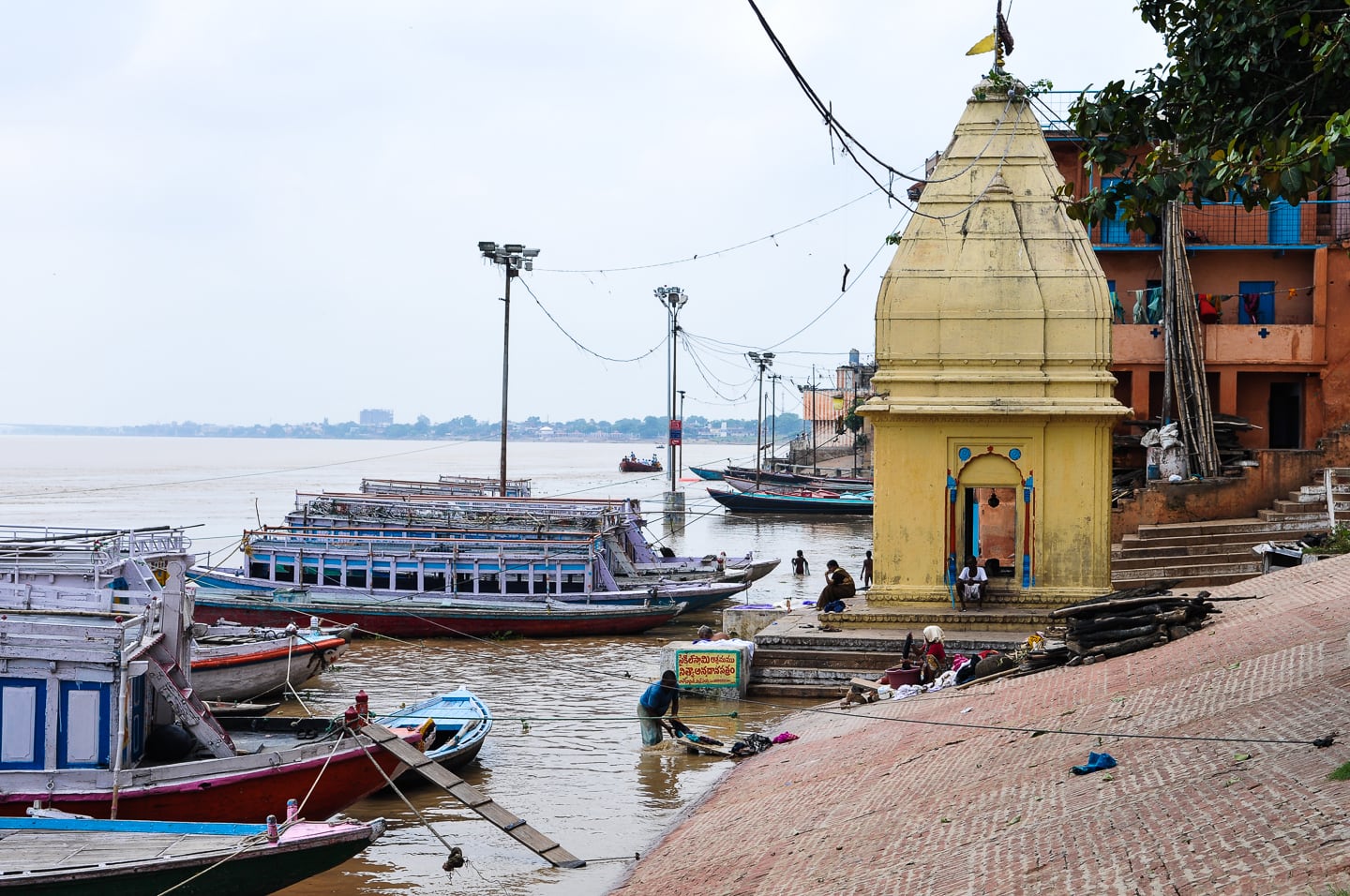
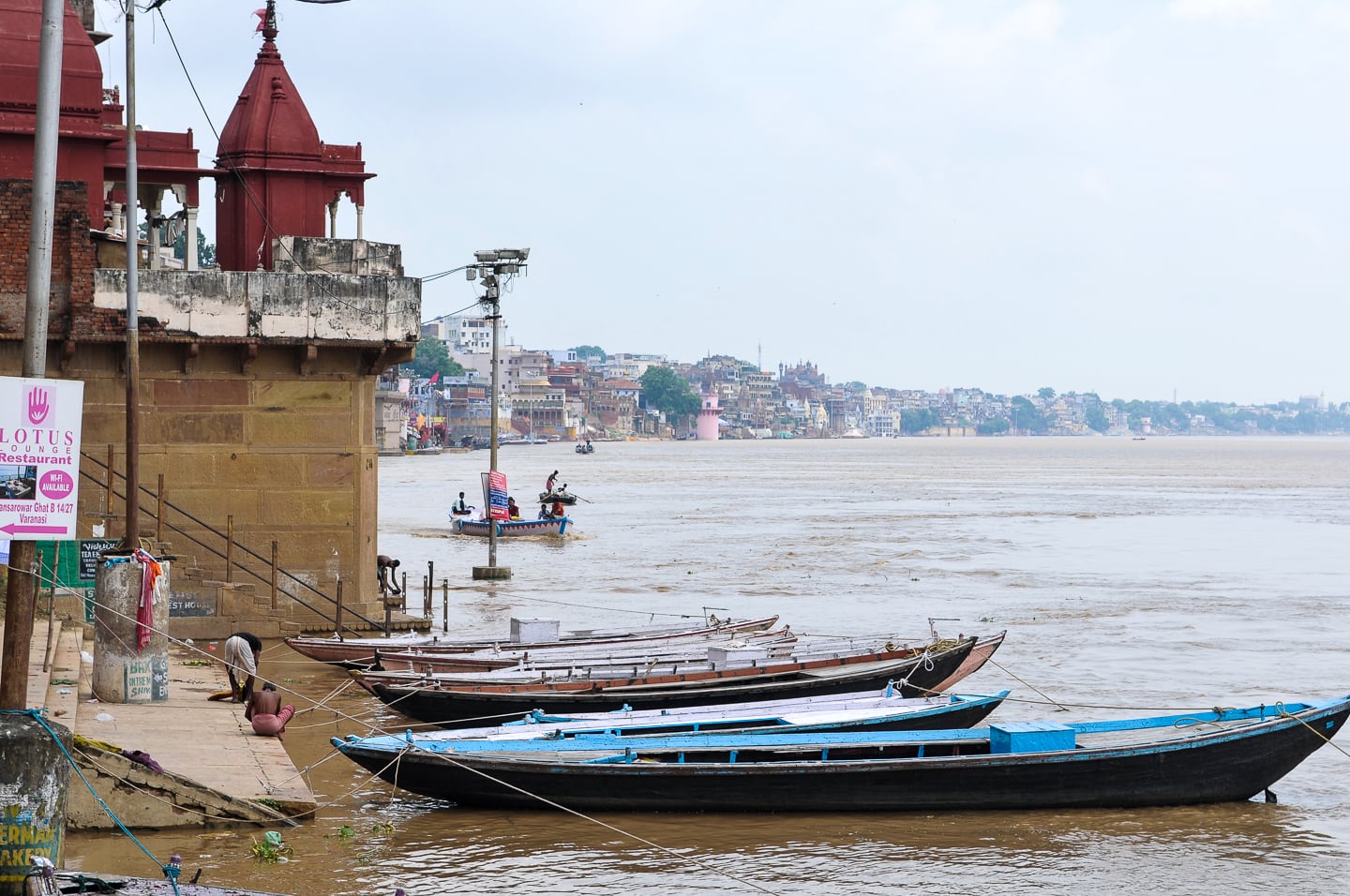
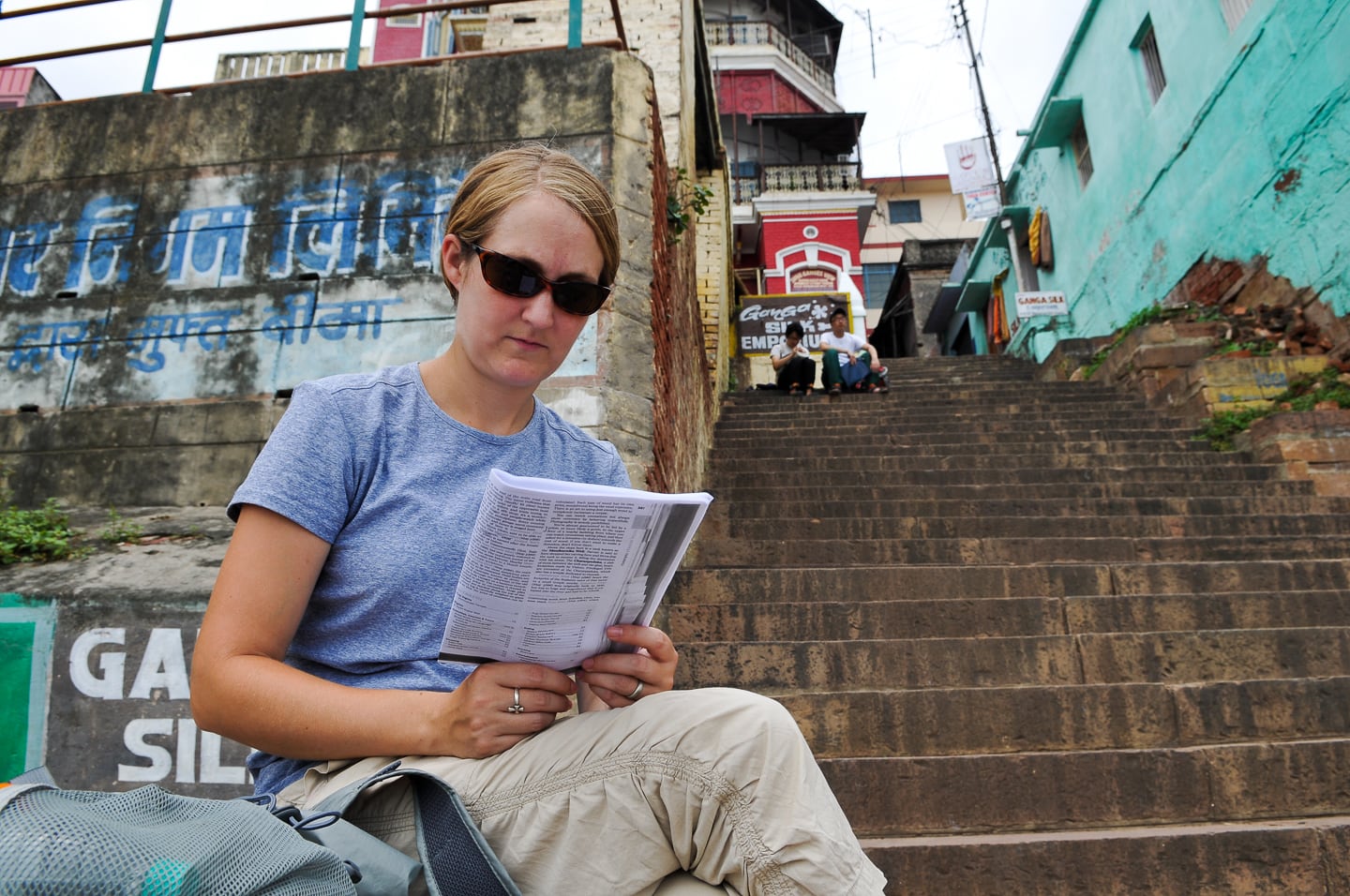
Lori studies our Varanasi map while monkeys eye her from above and half-naked men bathe below amongst water buffalo and floating trash heaps.
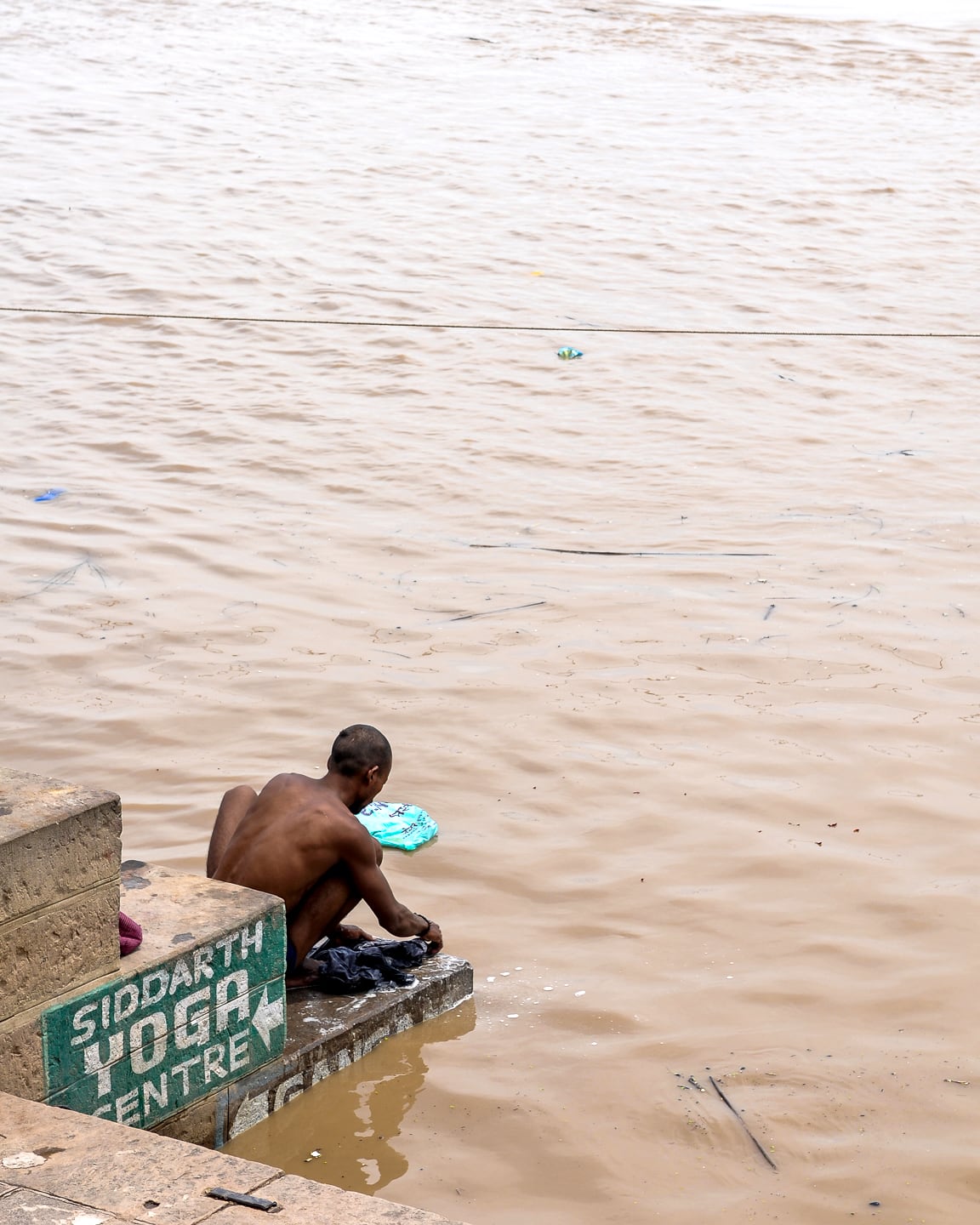
Washing at Mansarowar Ghat. You’ll notice that the steps continue down below the water line, and indeed for quite a ways. We are here in the midst of the monsoon and the Ganges has swallowed the famed river banks entirely.
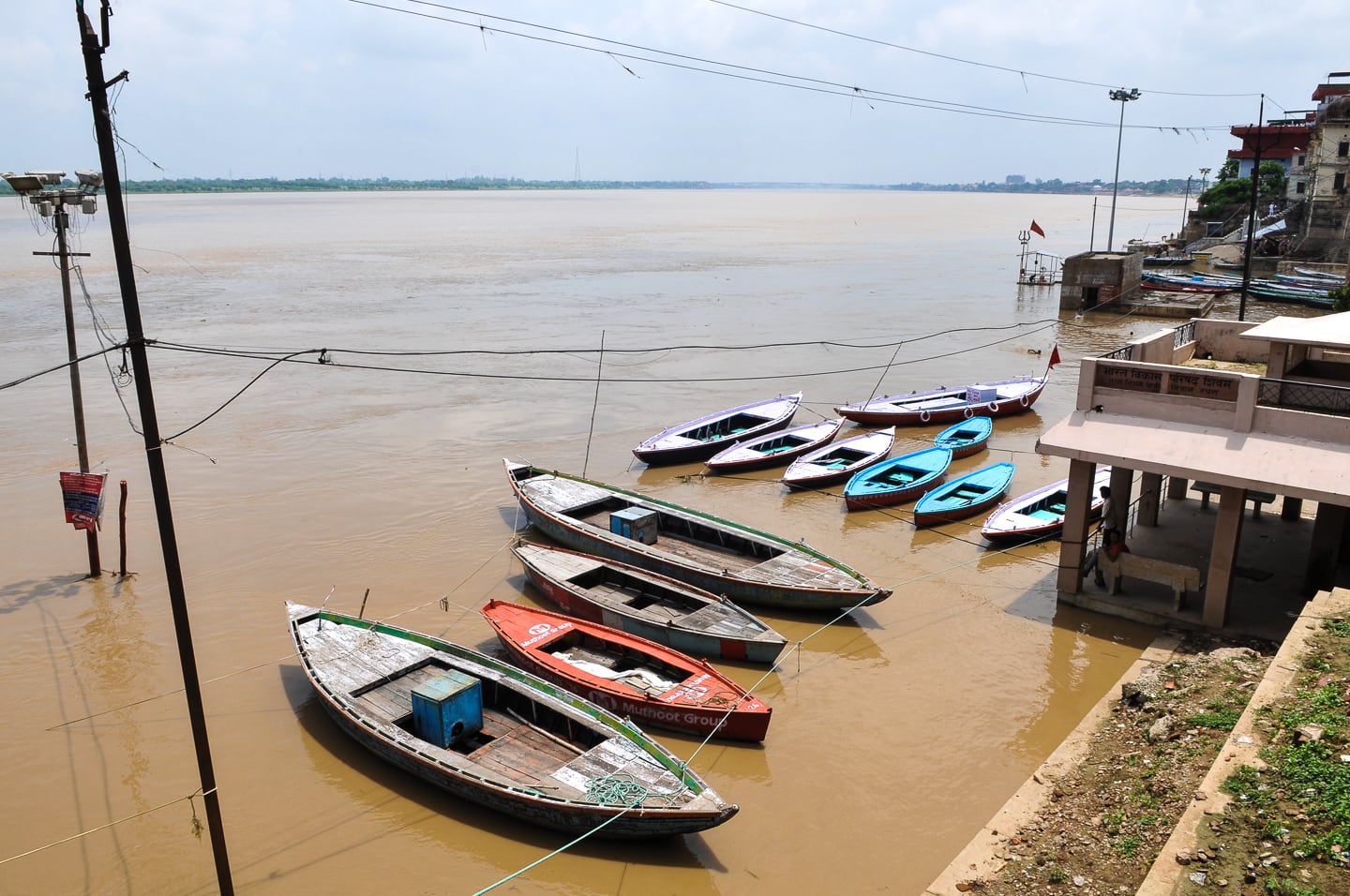
As we continue our journey south, we come across the ghat, which I can’t remember the name (and question whether I even knew it in the first place). This seems to be a ghat popular with water buffalo and rowboats. While no touts bothered us during our walk, some of the water buffalo seemed none to happy that we were invading their privacy. Upon spotting us, one even went as far as climbing out of the water and hustling right toward us with an angry look. We were saved by a young man who’s job it appeared was to keep the beast in the water at all costs. If he hadn’t awakened from his nap at the top of the ghat, we surely would have found ourselves running through the alleyways of Varanasi with a large angry water buffalo in tow and likely little hope of escaping unscathed (or at least, unembarrassed).
Here’s to you, Mr. Water Buffalo hearder dude.
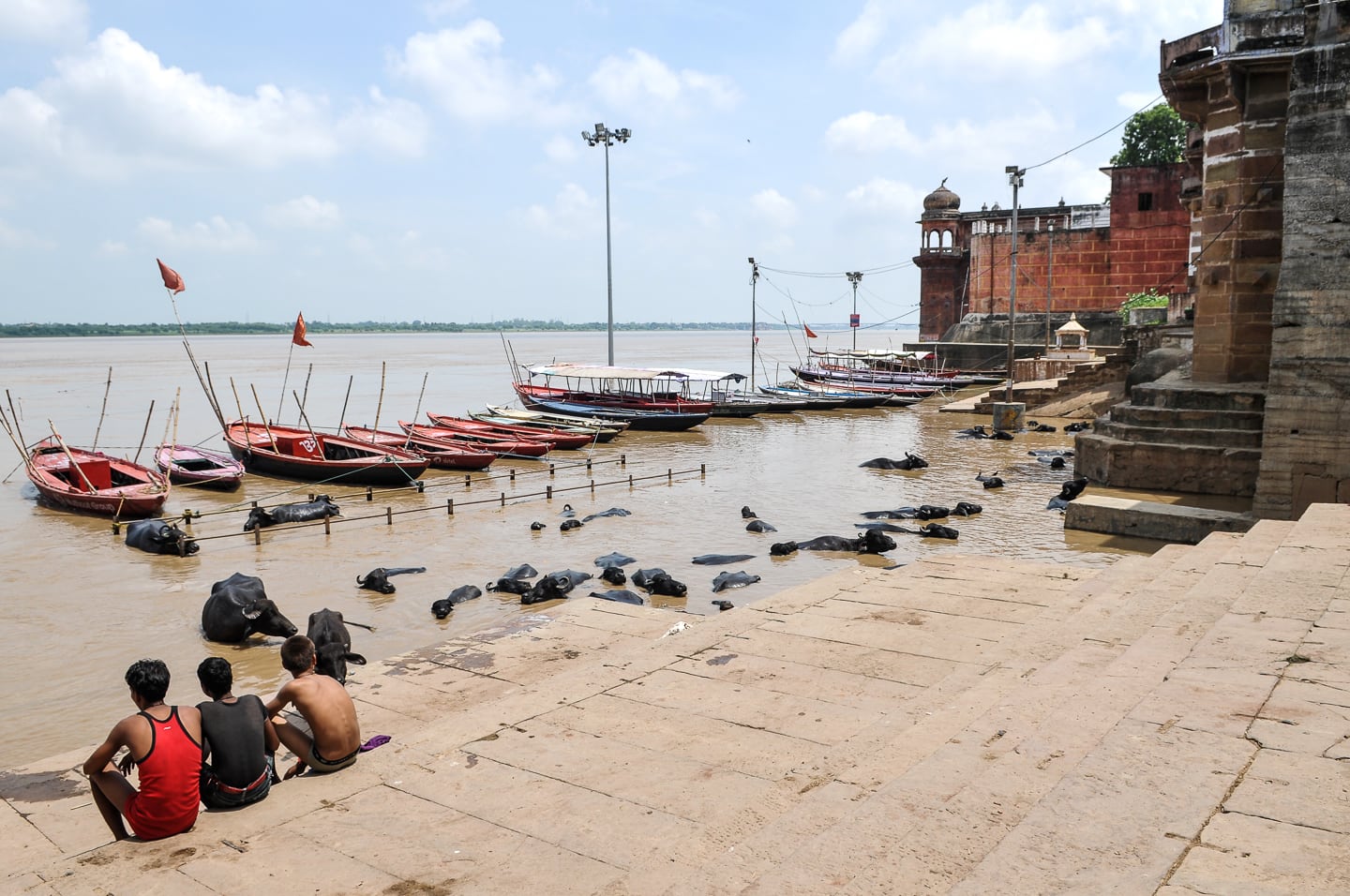

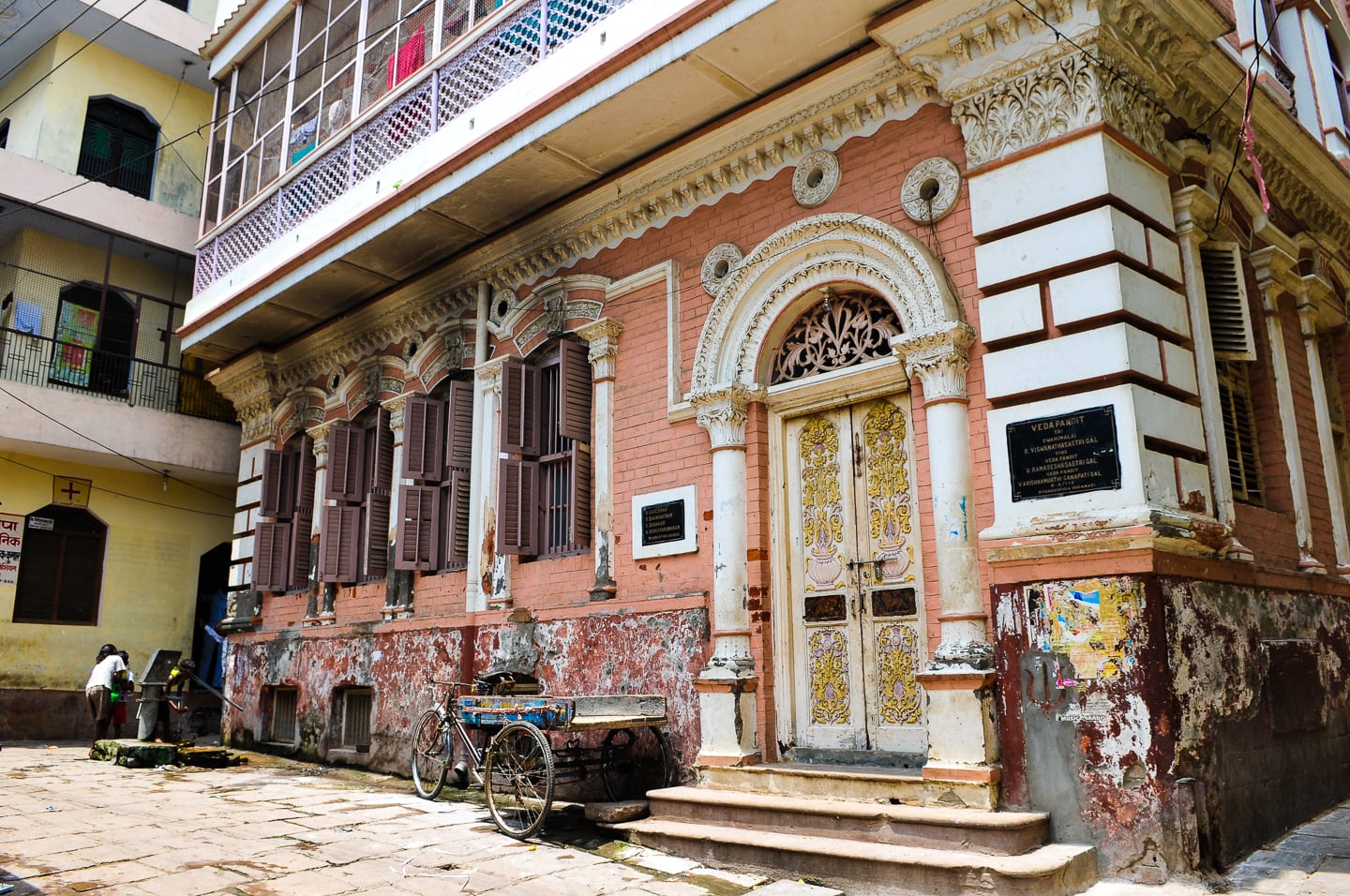
Farther along, we came upon an old abandoned Hindu temple with a prime spot right on the water and some picturesque views of the Ganges. It was a rare moment in Varanasi for the two of us to relax away from the watchful, curious, and overbearingly obnoxious eye of Varanasi’s inhabitants.
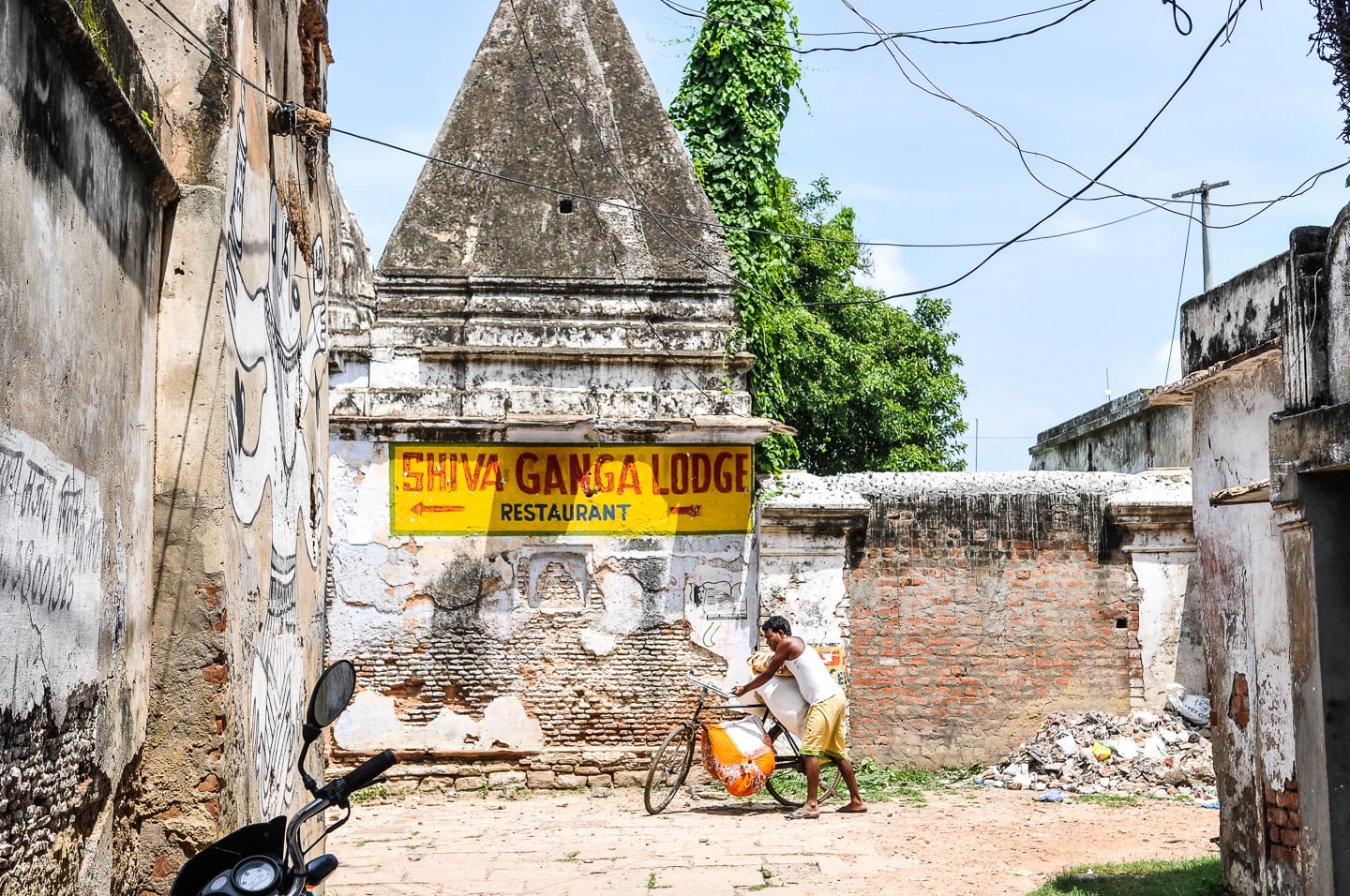
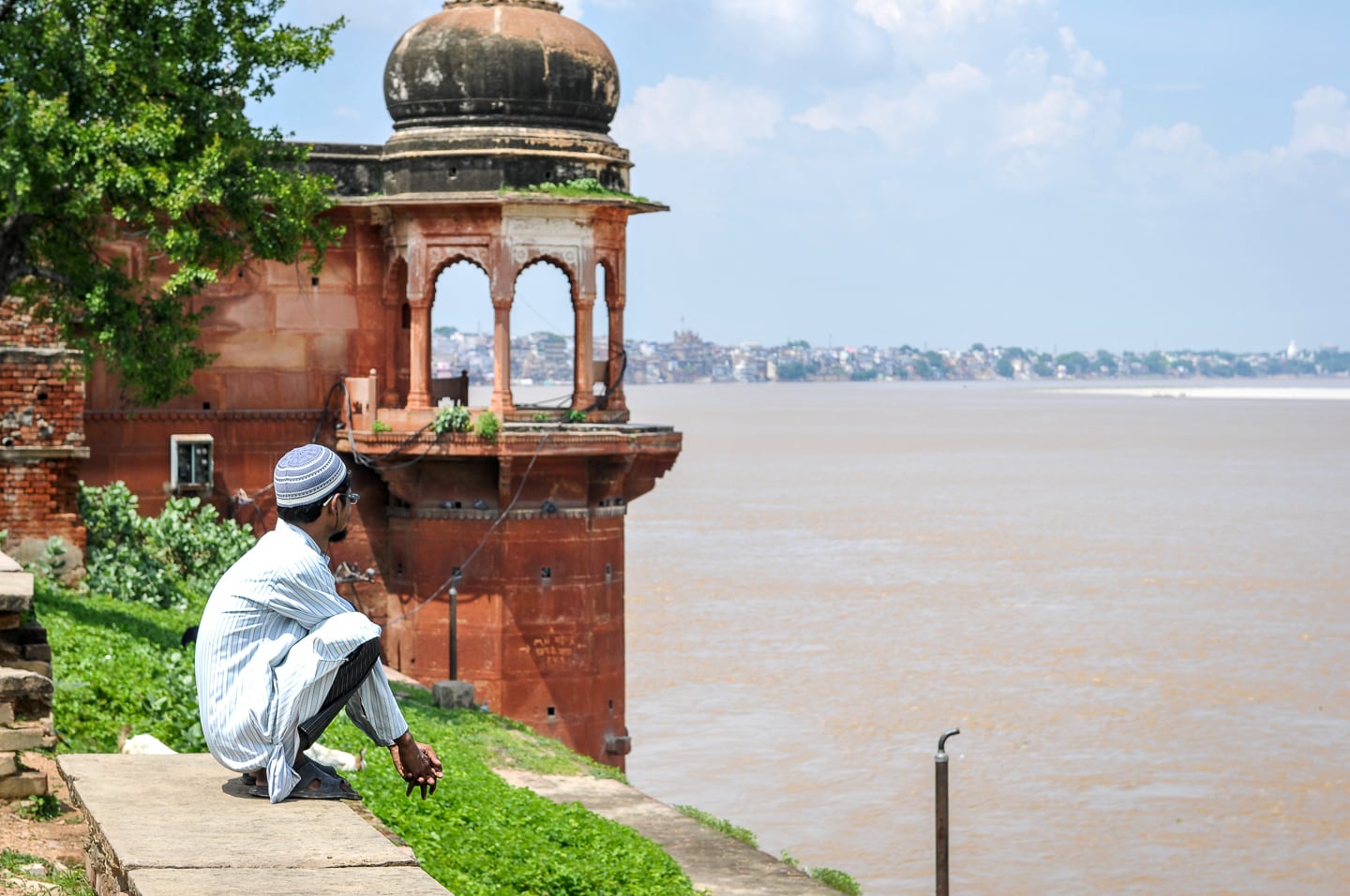
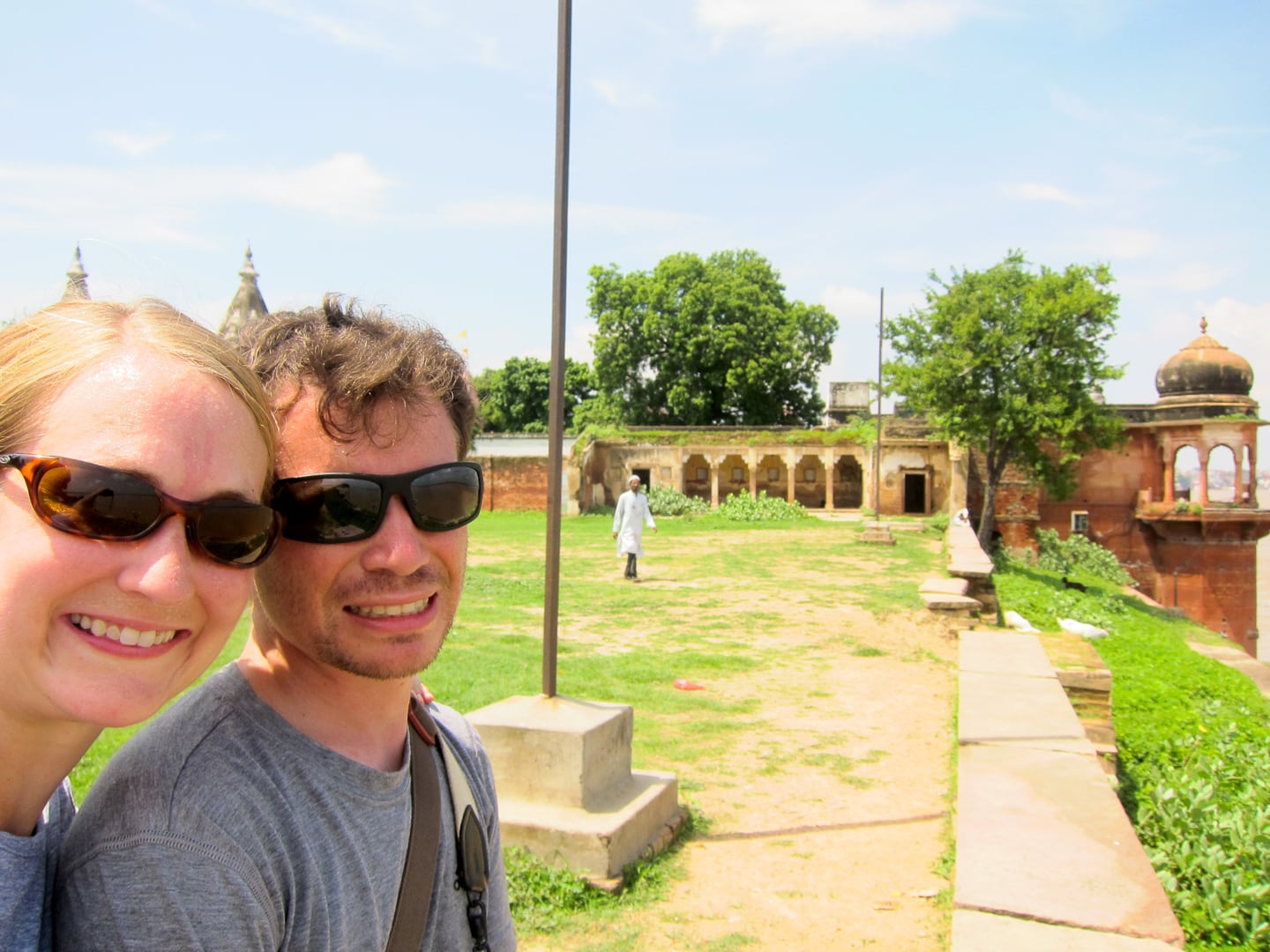
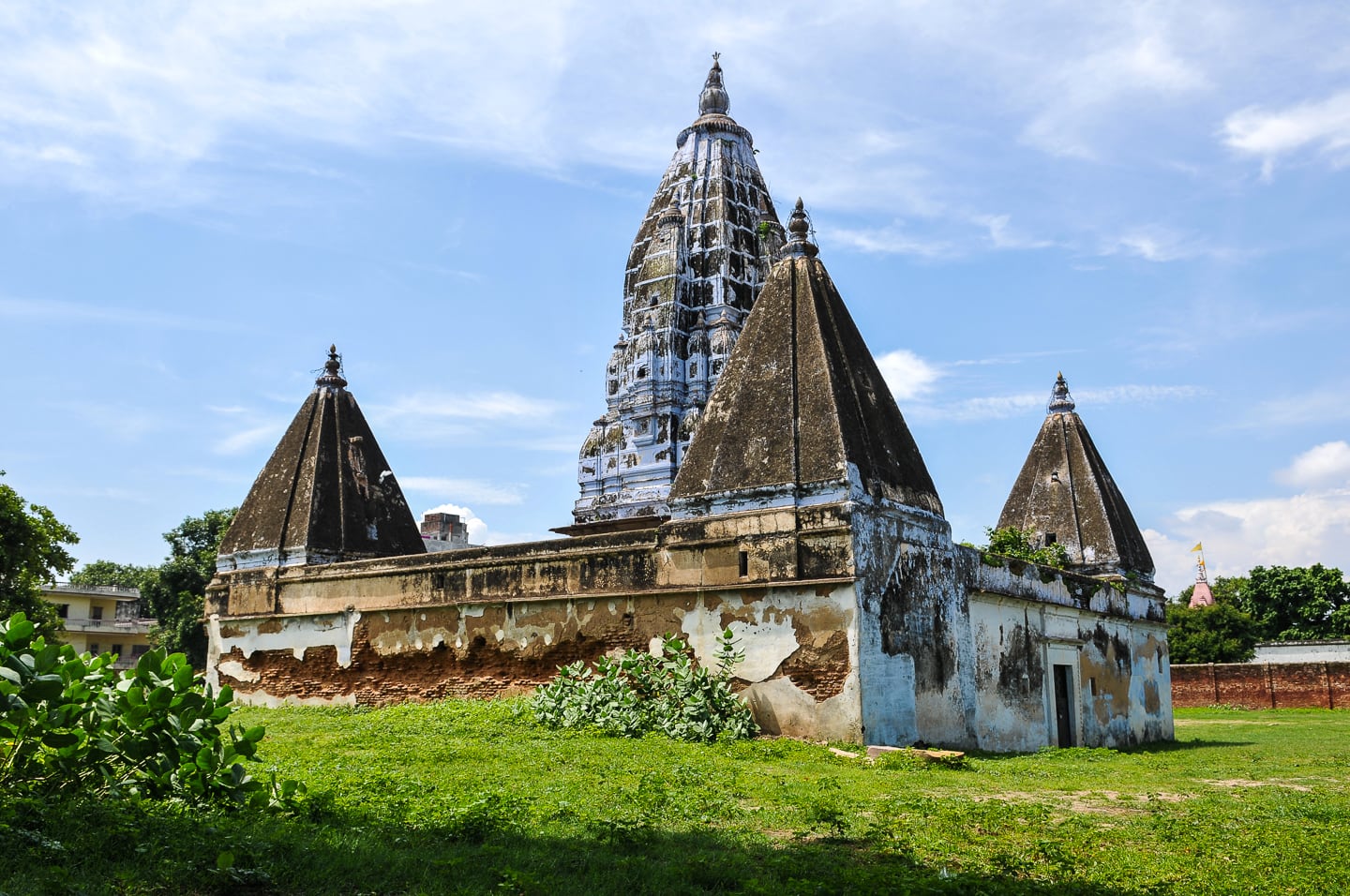
When we finally reached Assi Ghat, the southern terminus of our walk that day (and all other days for that matter), the sun was setting. It was the one day that the sky was relatively clear and we were treated to a real sunset. We believed we’d have many more opportunities to take a boat out at sunset, but I got sick of course, and it rained for the rest of our time. But as for this evening, the sky was clear, people were out, and the atmosphere was quite nice.
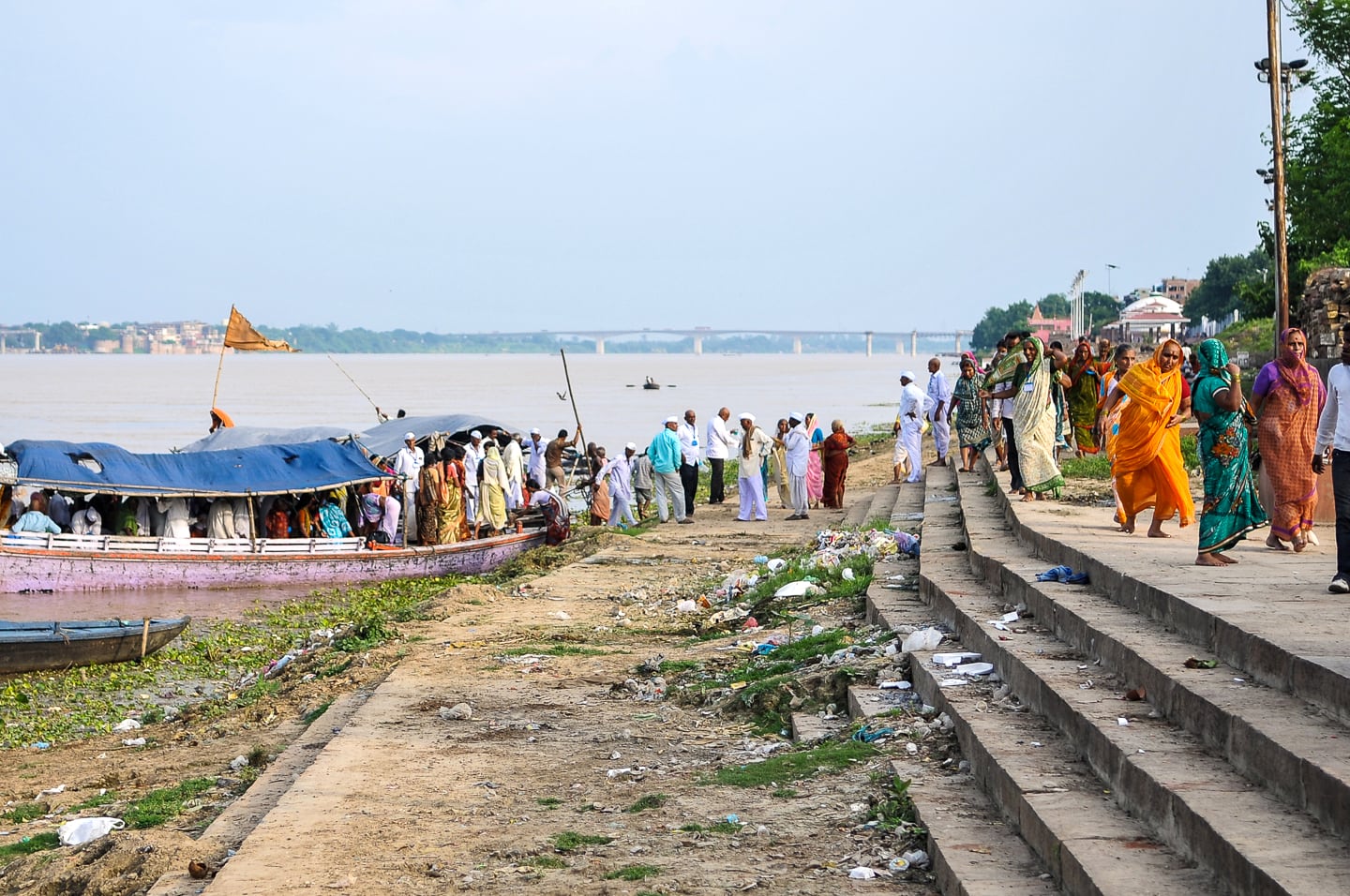

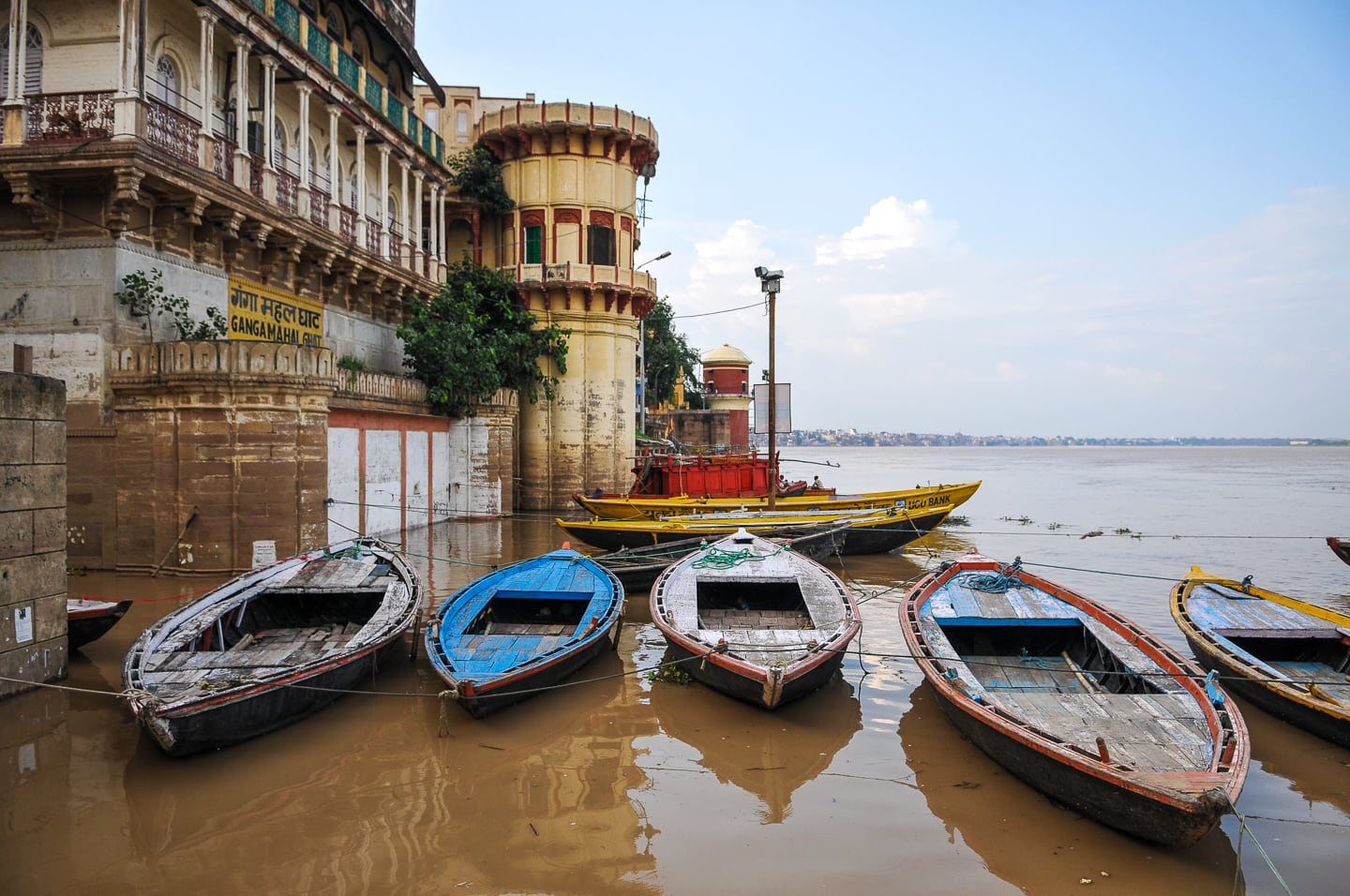
Here are some lovely photos that Lori took one day while I lay passed out at Shanti Guest House sucking burning body ashes and paint fumes (they were remodeling).
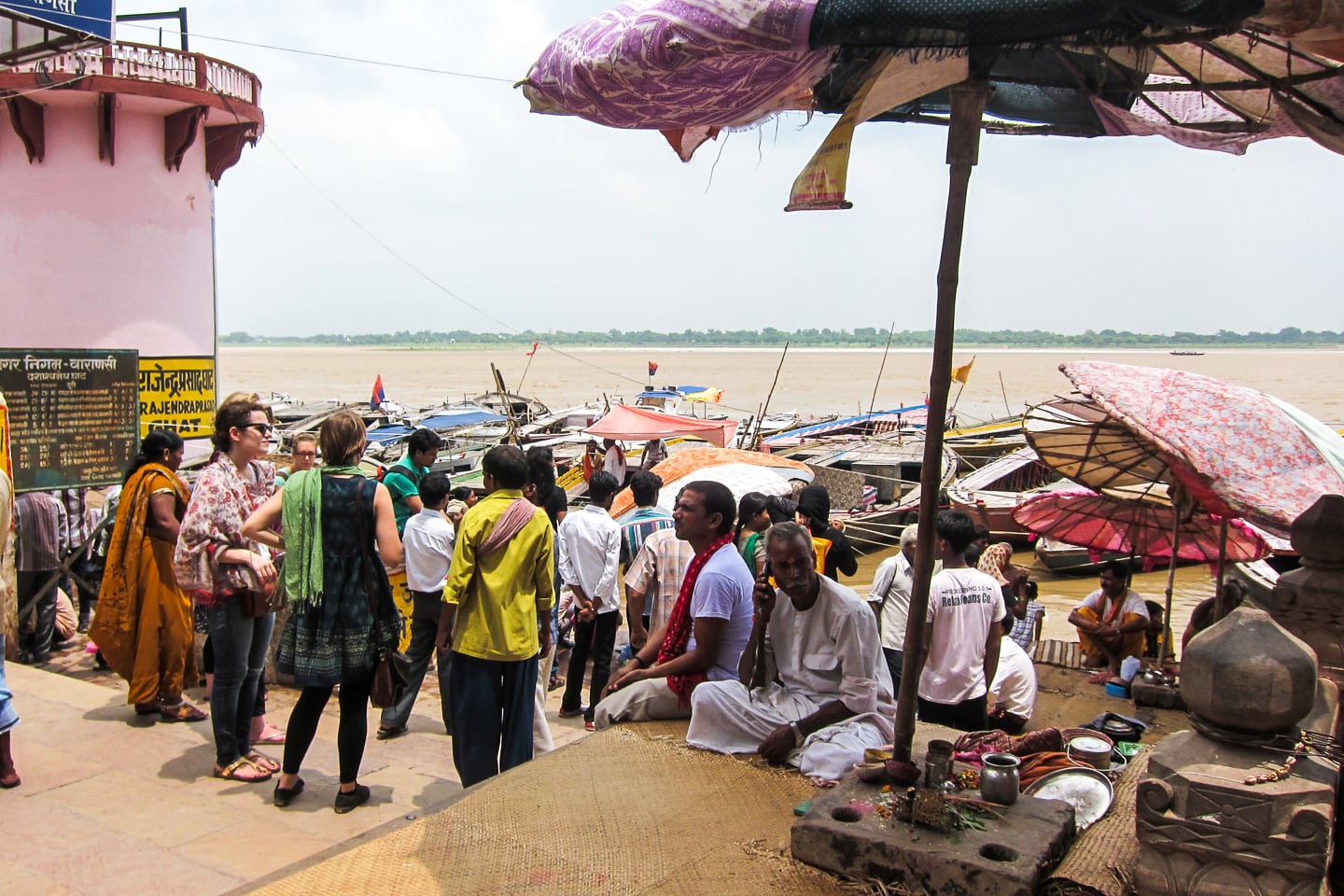
Down at the main Ghat where every evening they have a fire ceremony to conclude the day. By day, gurus sit and apply tikka (dot on the forehead) to pilgrims and (more likely and lucratively) foreign tourists.
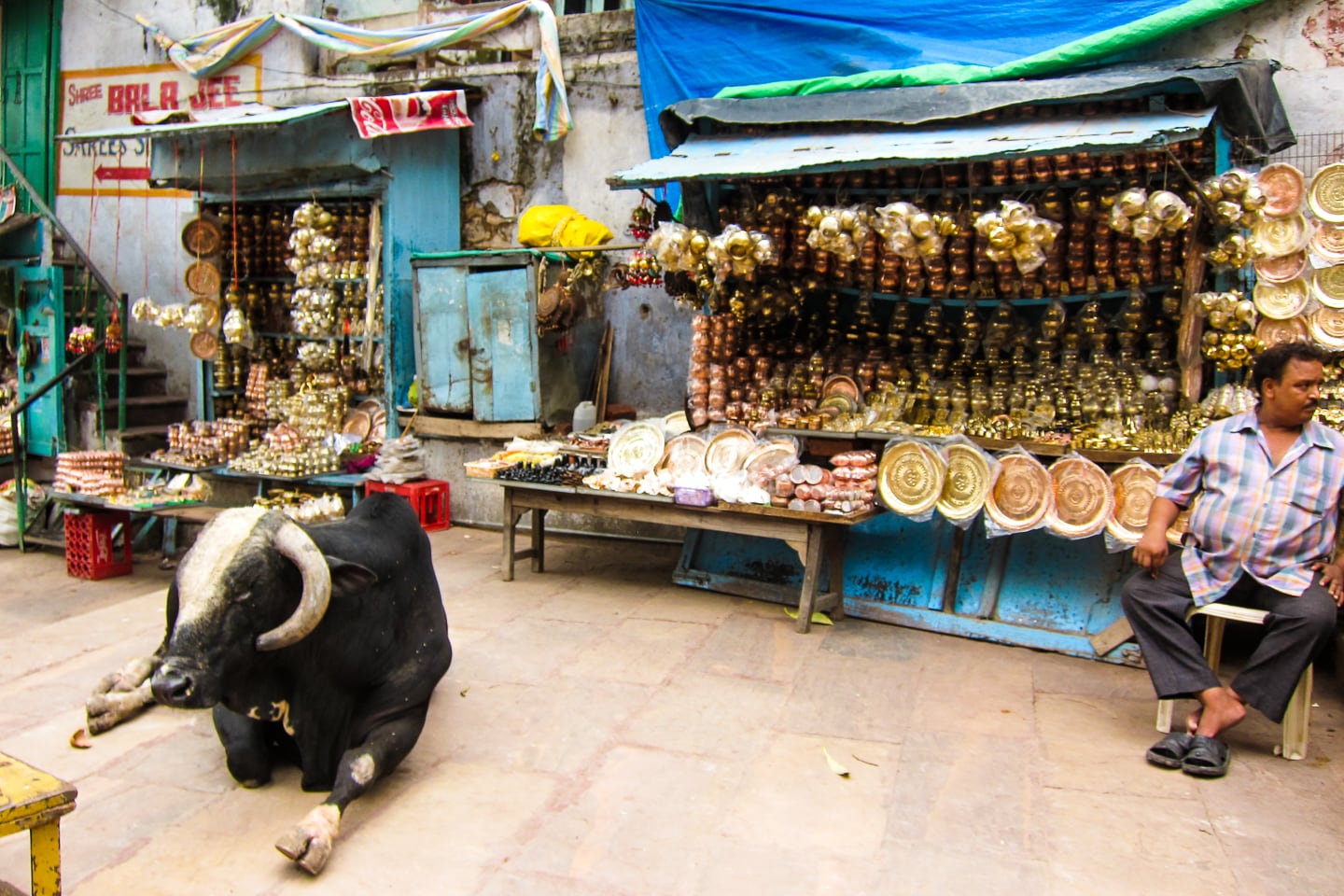
Finally, I leave with this photo of Manikarnika burning ghat [below]. This is also the view from the window of our room at Shanti Guest House. You can see the tourists standing on a balcony and peering down. What’s not really clear from this photo is the smoke. The people are watching bodies burn about 15 feet below. Some times one, some times many. The families carry them through the narrow streets down to the burning ghat and set them on top of a large bundle of firewood. The bodies are wrapped in fine linens and adorned with flowers. Their heads are uncovered and faces are in plain sight. A Hindu priest leads a short ceremony and family members bring smoking reeds to the pyre, which they use to light the wood pile. Within a short while, the body is consumed by flames. It takes three hours to completely incinerate a body this way.
The wood that is used can be of varying quality depending on how much the family is able to spend. Poor people get the cheap stuff. If it is done right, there is no smell of burning flesh. There is an exact weight of wood that is used (somewhere around 300kg). Too much, and the family overpays, too little, and the body is not consumed or begins to smells.
There is no refrigeration system in India (for the most part) for transporting bodies to Varanasi, so in the summer time especially, the bodies of the deceased must be cremated as soon as possible. For this reason, there are many hospices in Varanasi near these burning ghats where the terminally ill and very old come to wait. The family members that can make the trip within a few hours attend if there isn’t much prior notice. At this burning ghat, they cremate only Hindus, but the one on the south side of town is open to all. Photographs, for obvious reasons, are forbidden at the burning ghats. Lori and I sat in on a ceremony involving three simultaneous burning ceremonies where a Hindu priest talked us through the steps.
Under some circumstances, bodies are not burned at Varanasi, but deposited in the river, hence the body near Lotus Lounge. If a body doesn’t burn completely down to ash, the remaining parts are also committed to the river for the vultures.
At night, looking out of our window, we could see the flames of the bodies being consumed and the occasional strong wind gust would send ashes raining down onto our white sheets. We had no illusions what they were from. Day and night, they chop and saw the wood for cremation. The burning of bodies never ends in Varanasi.
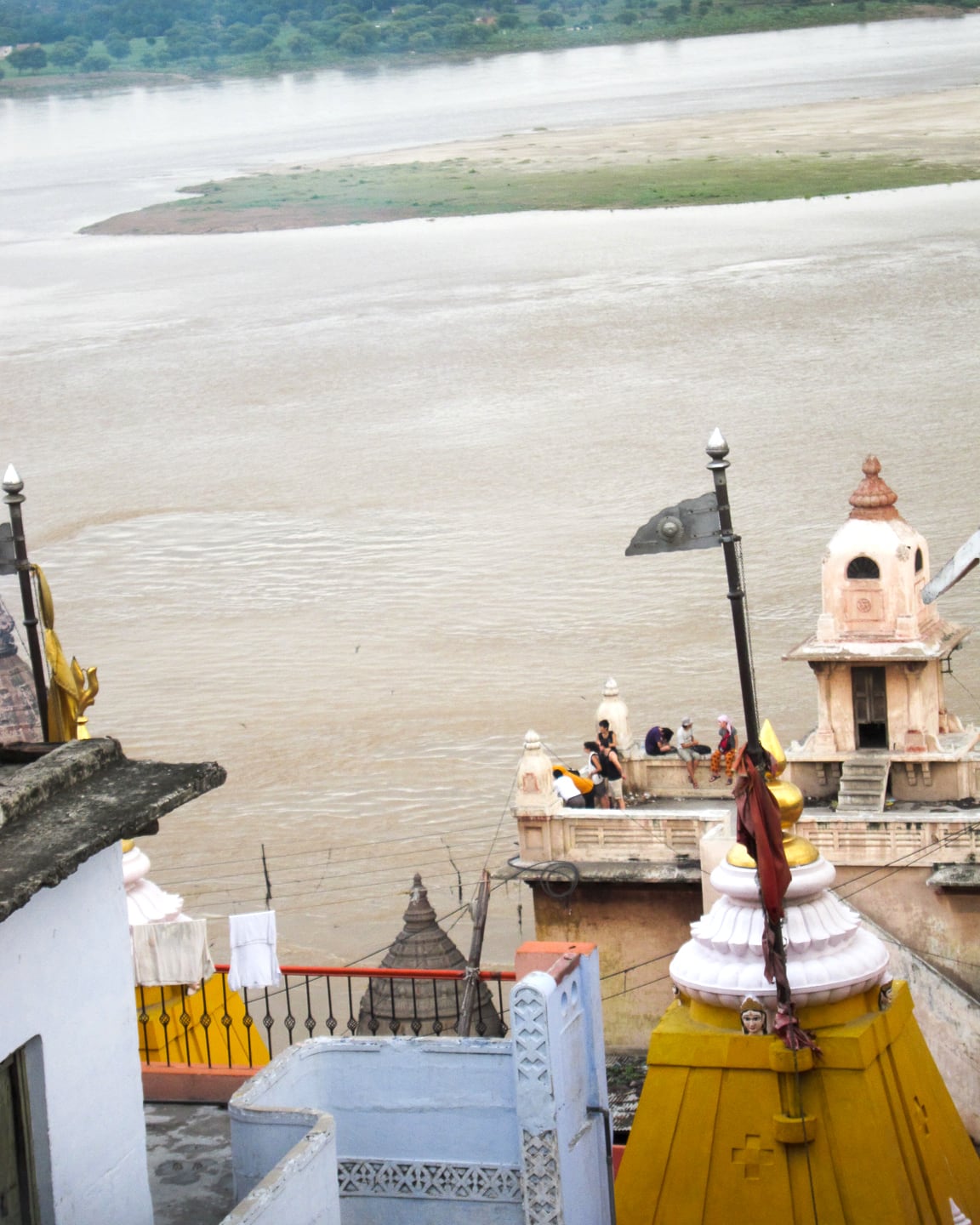
I didn’t want to end this posting on such a morbid note, so I give you a snapshot that Lori took of two young boys walking down the road in Varanasi. Now, if that doesn’t downright warm your heart, then nothing will… Namaste!
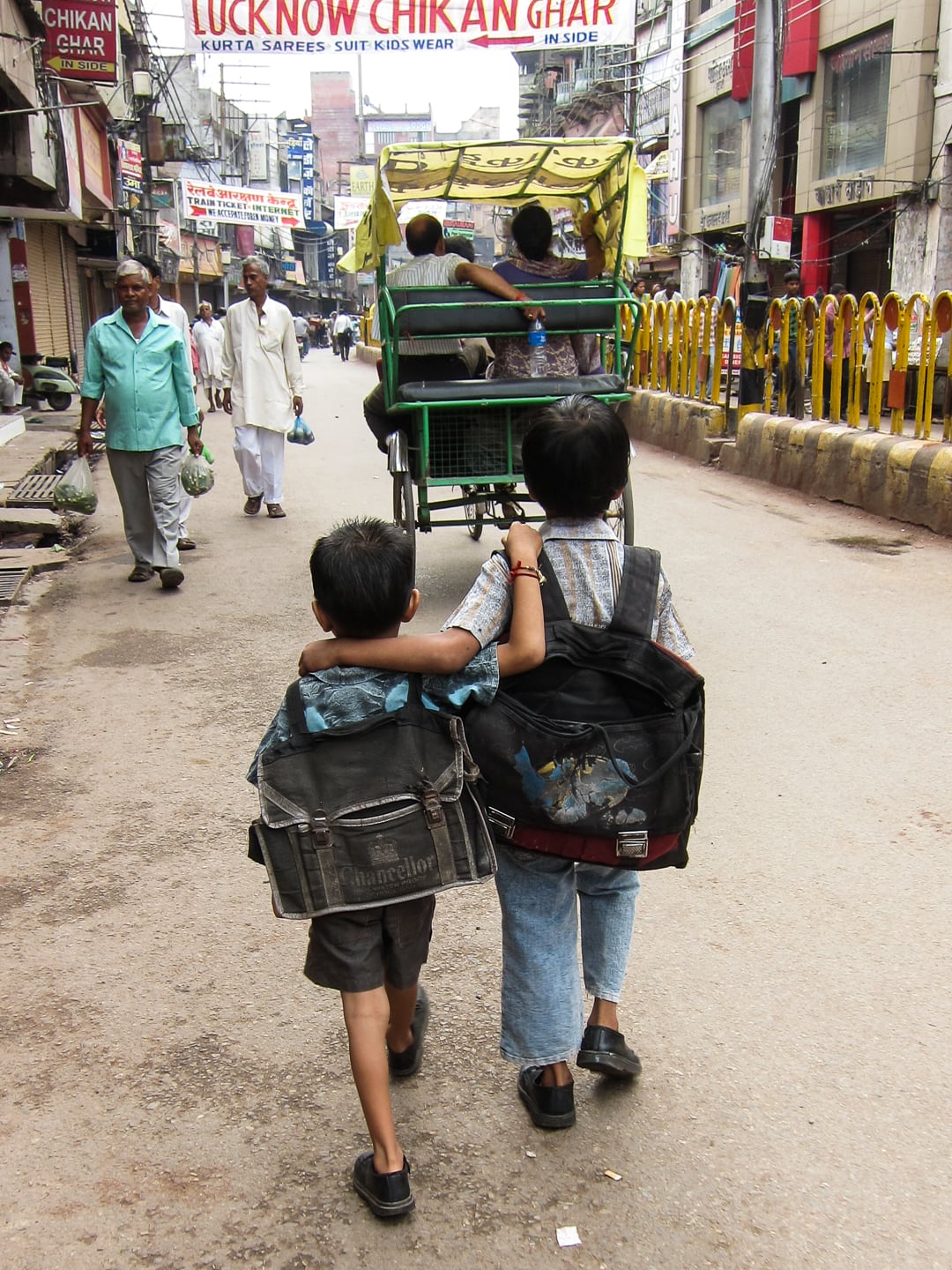
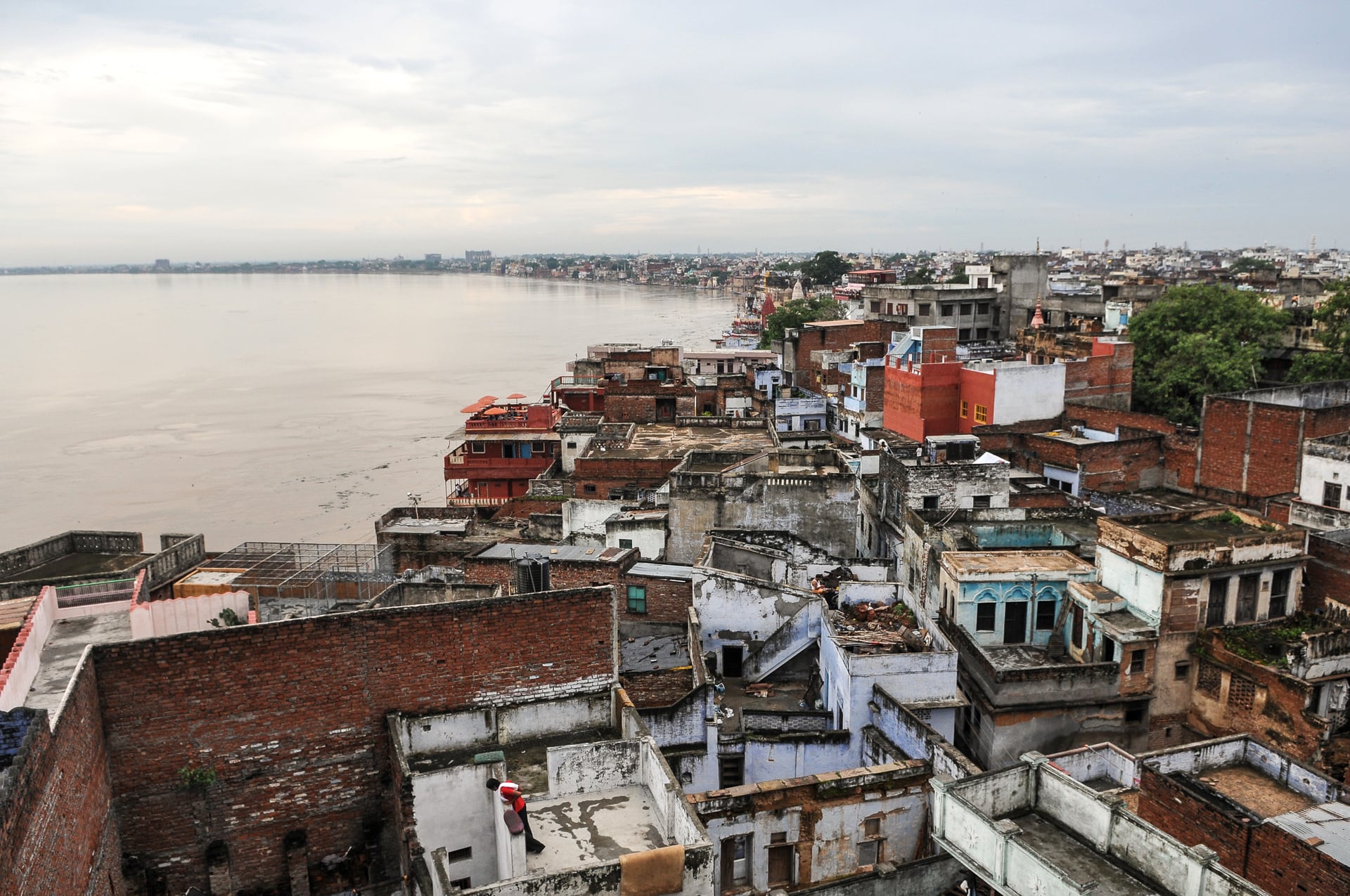
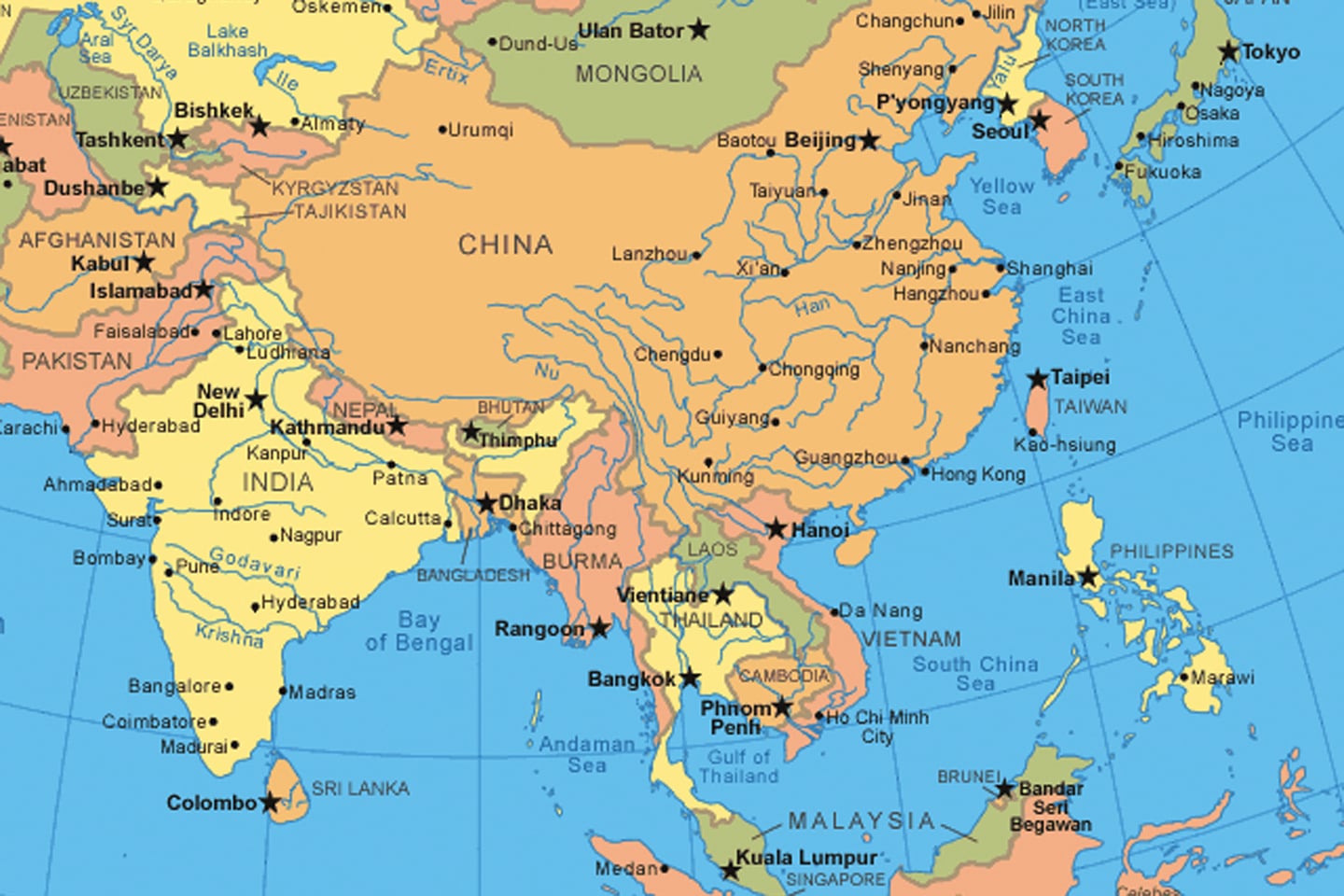
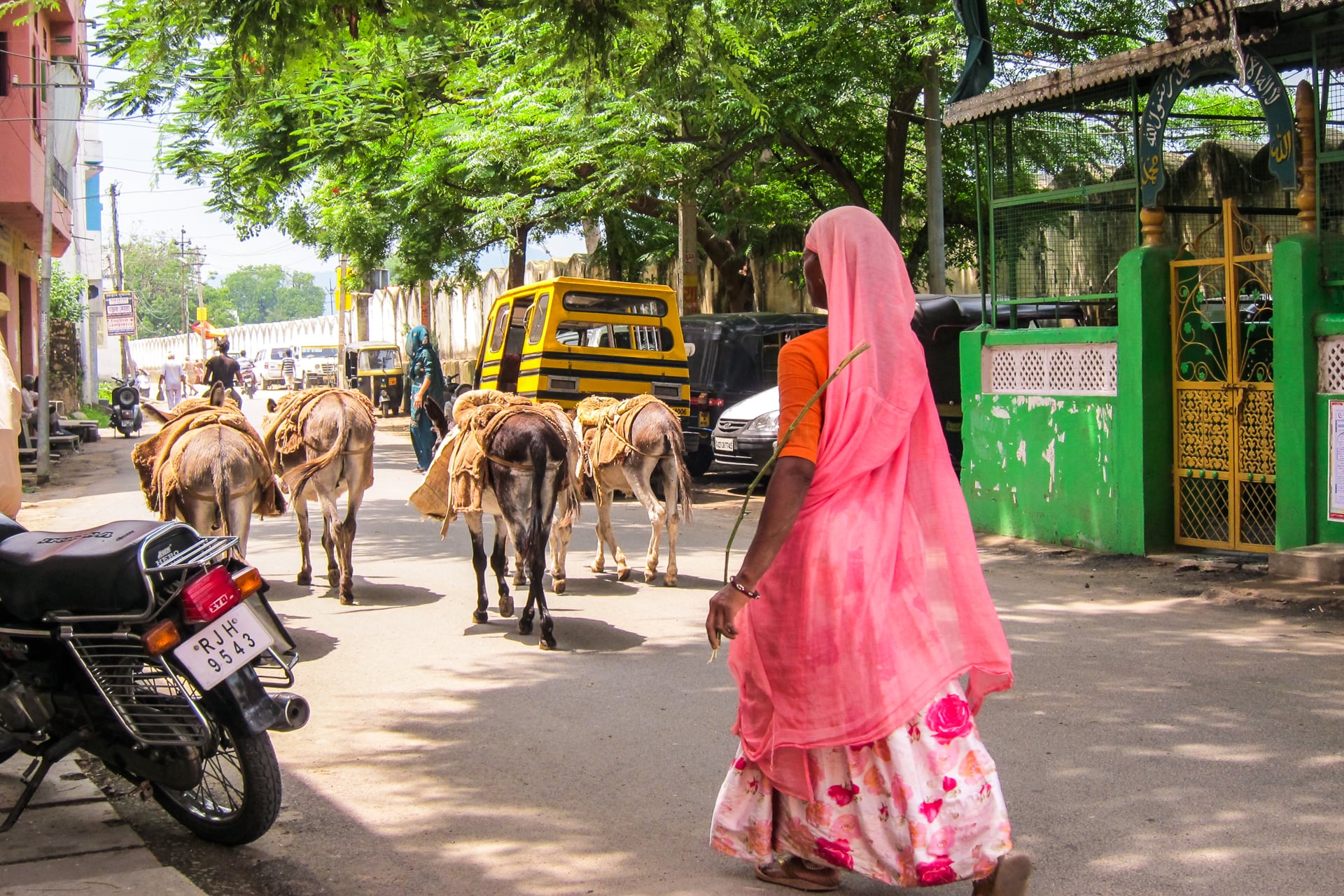
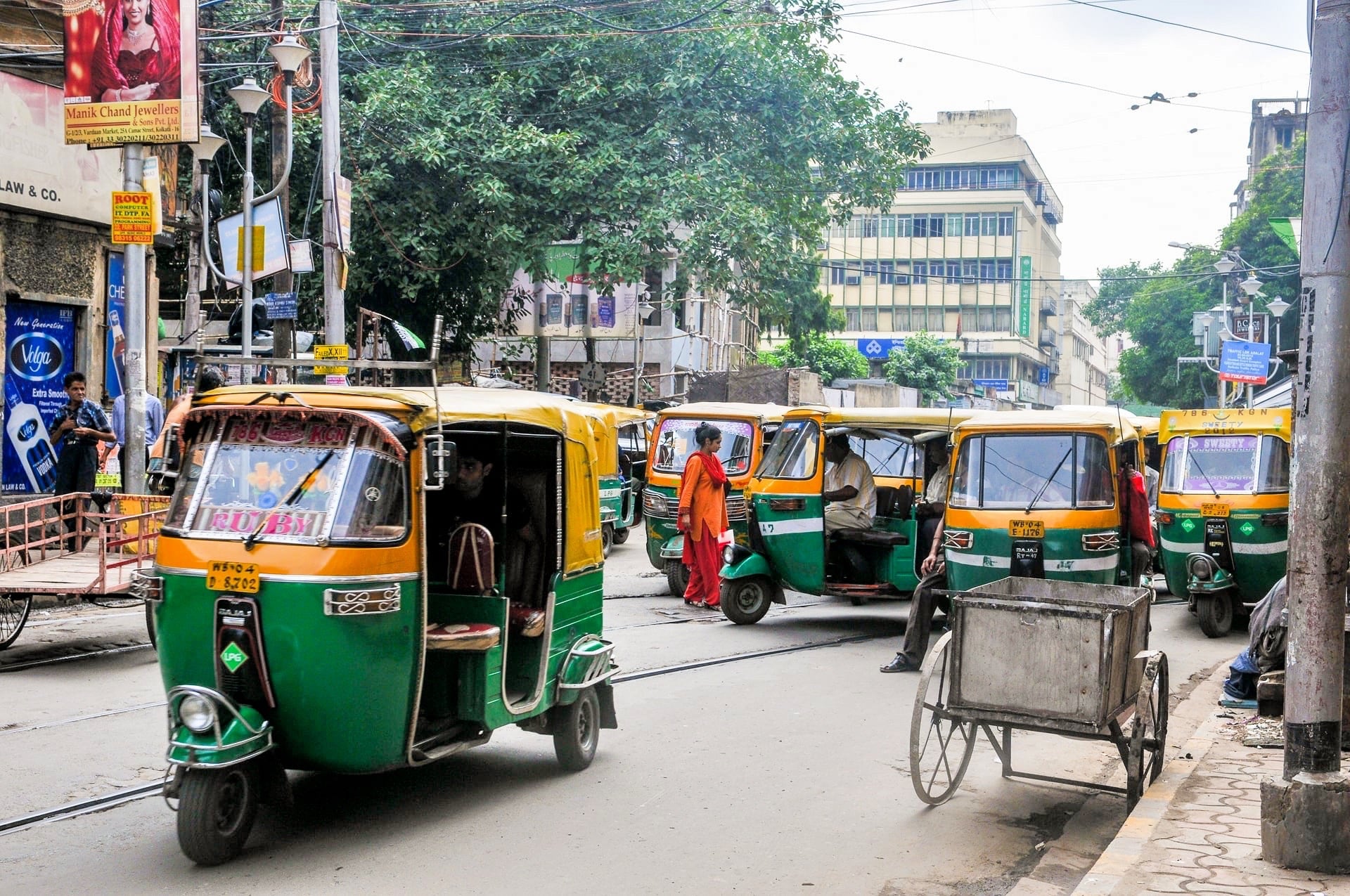
As usualI very much enjoyed your updates !
What can I say? wow!!! This time around, a lot of frightening things happening!
Glad you are botth feeling better after being
so ill. So much of this last report left me
totally speechless.
Much love and keep well! Grandma/Trudy
Great meeting you guys! How’s the trip south treating you?
From what we’ve heard asking others, we’re hoping that your experience with the overflowing rivers is a temporary thing. Others have since said it was ok for them.
Meanwhile, the streets flooded here in Jodhpur for about an hour, every bit as bad as it was in Delhi–day 3 and still no real sightseeing, lol. I guess the flooding is just an Indian thing.
Great meeting you guys as well! Got a couple days of torrential rain in Mumbai after leaving Jaisalmer, but Kerala was beautiful weather for the most part. Now in Chennai relaxing and getting ready for Thailand. Looking forward to utilizing some of your SE Asia tips.
Safe travels!